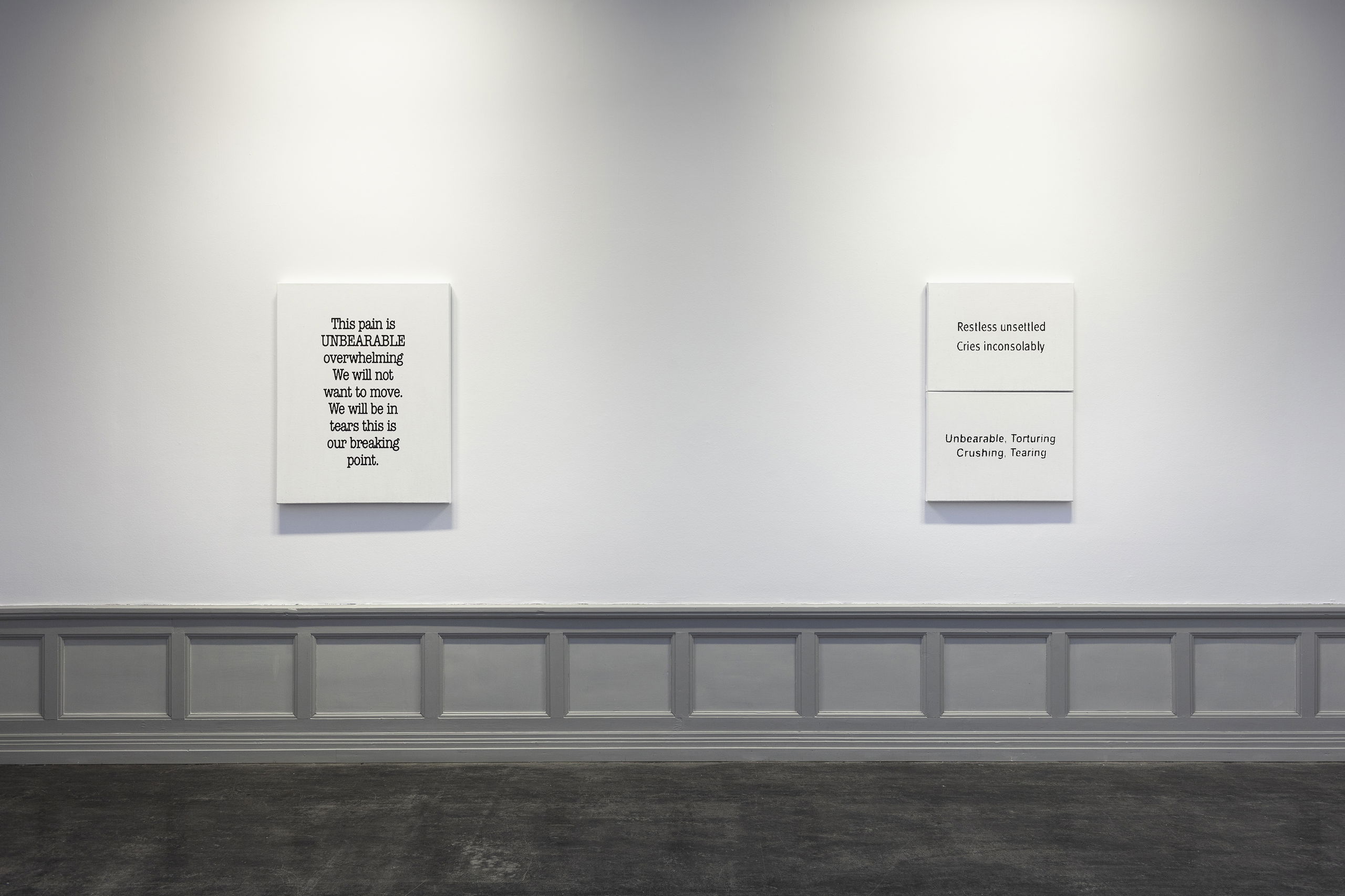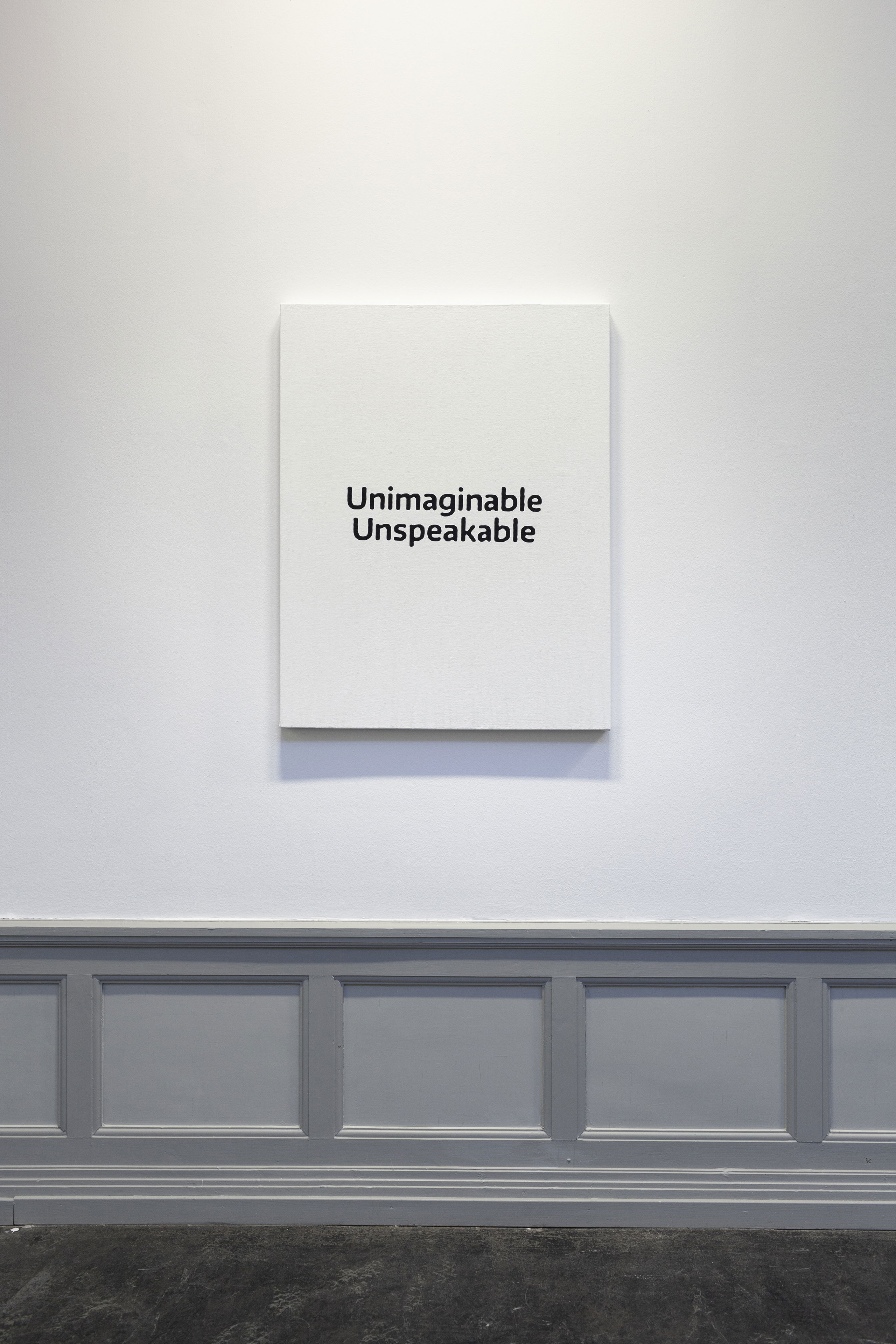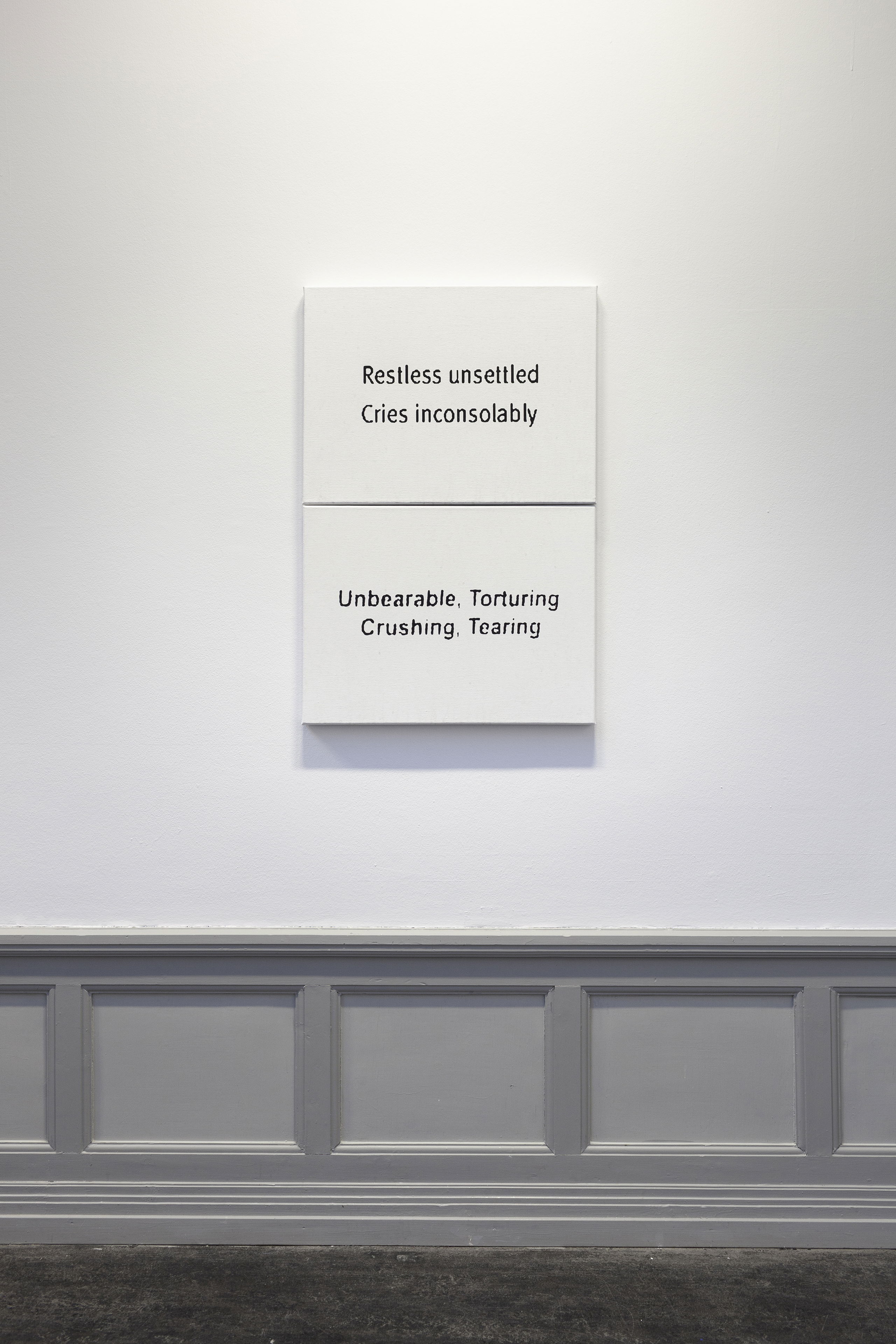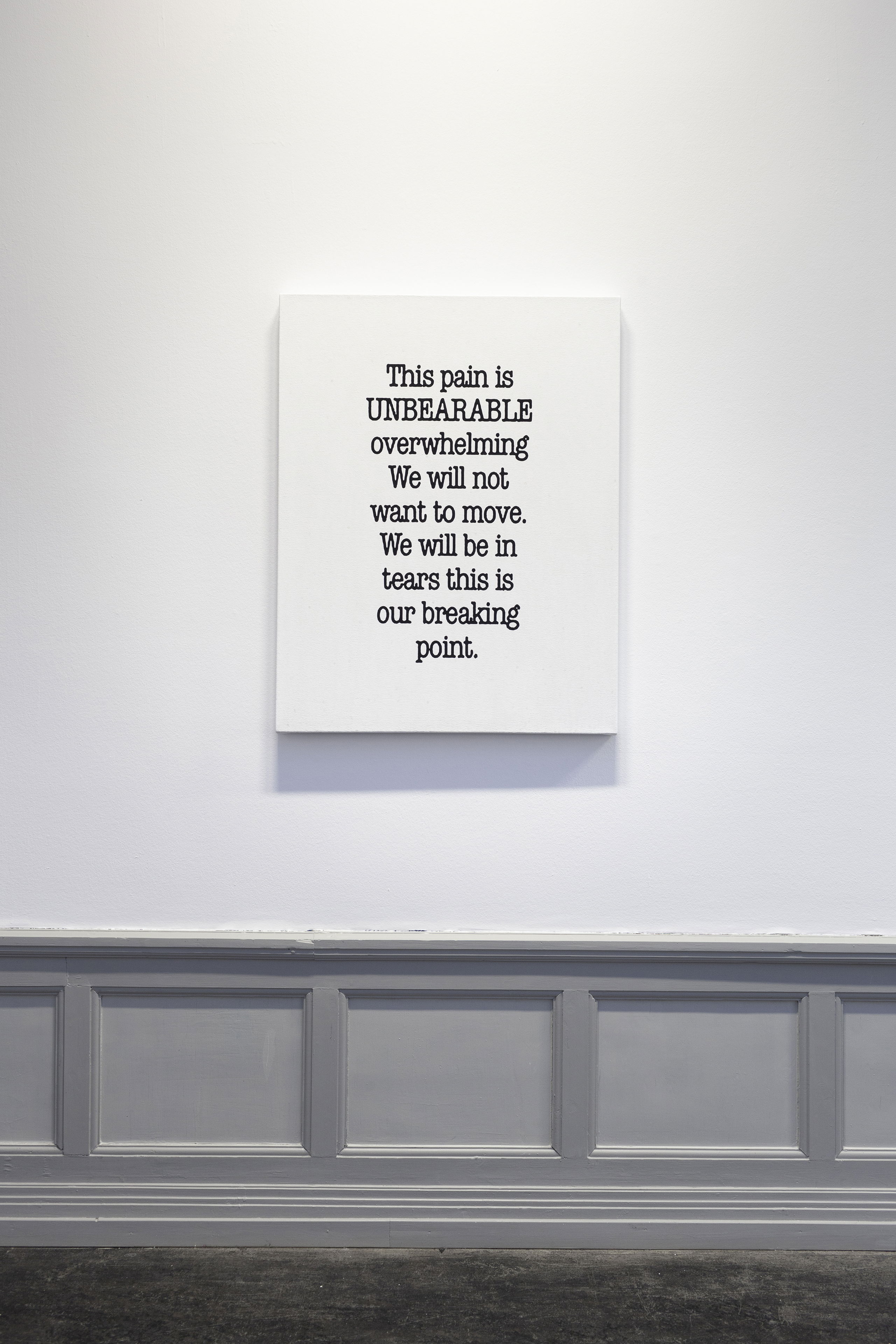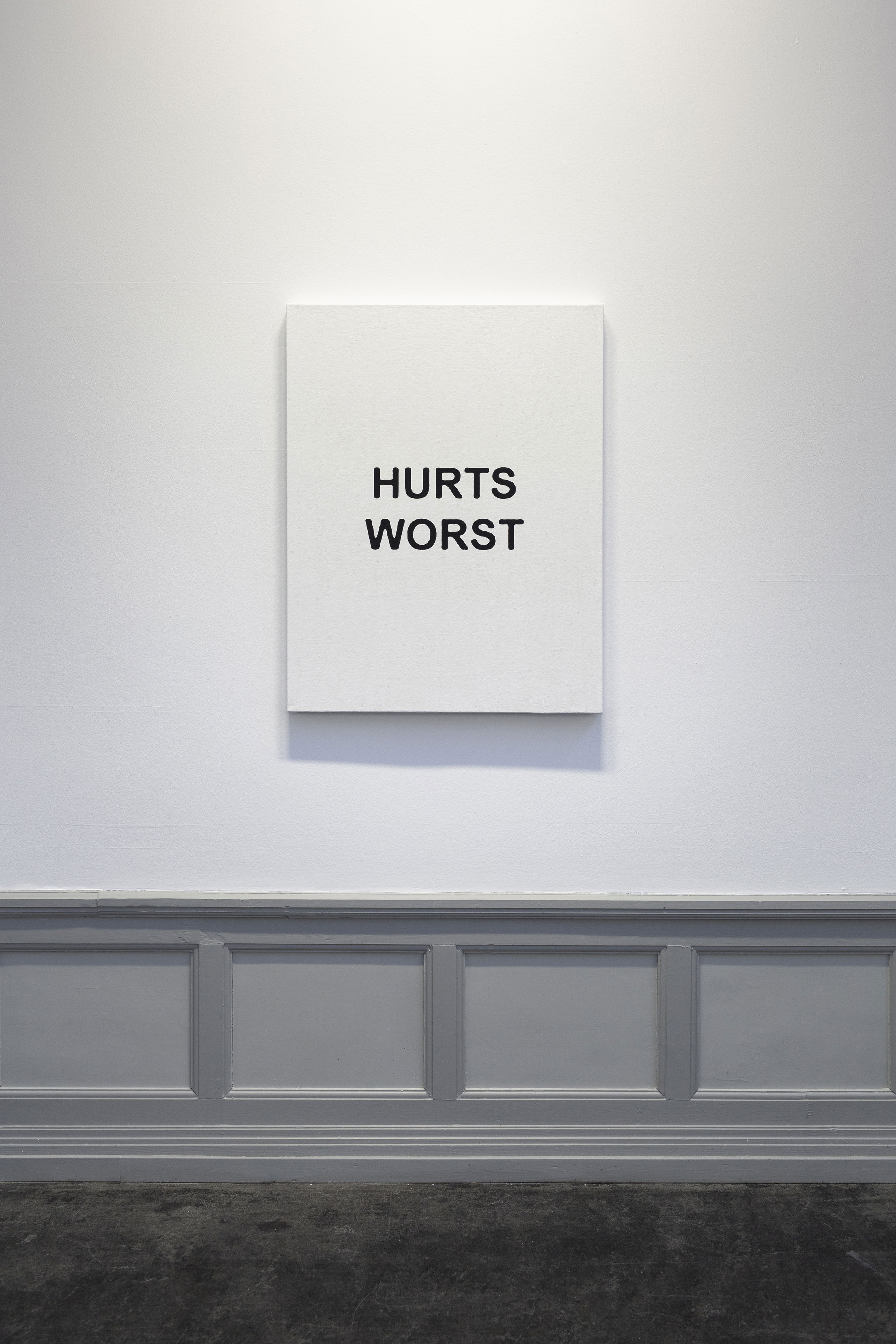
Artist Amanda Ross-Ho has forged a unique practice located at the intersection of the artist’s studio, the memento, and the internet. In HURTS WORST, the artist continues her exploration of objects and images that are at once personal and universal. Through her adoption of a symbol system traditionally used to measure physical pain, Ross-Ho creates an exaggerated metric for the collective existential agony produced by our contemporary moment.
One of the effects of the increasingly globalized and connected turn that communication has taken in the 21st century has been an attempt to create systems that might transcend distinctions between language, identity, and ability. Today, the most obvious example is, of course, the emoji, which was first developed in Japan in 1999 alongside the burgeoning cell phone industry. In 2010 emojis were popularized worldwide through the ubiquity of text messaging and their inclusion in the Unicode system, which standardized their code
Artist Amanda Ross-Ho has forged a unique practice located at the intersection of the artist’s studio, the memento, and the internet. In HURTS WORST, the artist continues her exploration of objects and images that are at once personal and universal. Through her adoption of a symbol system traditionally used to measure physical pain, Ross-Ho creates an exaggerated metric for the collective existential agony produced by our contemporary moment.
One of the effects of the increasingly globalized and connected turn that communication has taken in the 21st century has been an attempt to create systems that might transcend distinctions between language, identity, and ability. Today, the most obvious example is, of course, the emoji, which was first developed in Japan in 1999 alongside the burgeoning cell phone industry. In 2010 emojis were popularized worldwide through the ubiquity of text messaging and their inclusion in the Unicode system, which standardized their code, thus allowing them to be used in other countries and across different platforms. This visual mode of communication also conjures associations with ancient pictographic forms, such as petroglyphs or lunar calendars and more recent, pre-internet precedents such as pictograms, emoticons, and weather forecast symbols. In addition to the emoji, a more ominous example of a shorthand system for mass communication might include the Homeland Security Advisory System that was developed by the George W. Bush administration in 2002 following the attacks on September 11th, 2001. Modeled on the forest fire warning system, this color-coded scale was intended as an efficient way to alert the American public to the imminent threat of a terrorist attack, with the most extreme being red, or “severe risk,” and, at the other end of the spectrum, green, signifying “low risk.” Instead, the system was widely criticized for having the reverse effect of sowing confusion and producing unnecessary anxiety. It was ultimately retired in 2011.
Taken together, these examples resonate with yet another notable precursor, what is known as the Universal Pain Assessment Tool (UPAT). The UPAT was developed in the 1980s as a way to help patients with limited communication abilities, such as children, to better measure and describe the intensity of physical discomfort. Similar to emojis, this scale attempted to bridge barriers to communication that might be posed by age, ability, culture, and language. Still in use today, it is comprised of facial ideograms, often in different colors, that portray various emotional states. Each face is connected to a number range and basic description, sometimes written out in multiple languages, such as 1–2: No Hurt or No Pain to 9–10: Worst Pain Possible, Hurts as much as you can imagine, or Hurts Worst. It is this most extreme end of the pain scale from which Ross-Ho has produced the works in this exhibition.
At the heart of Ross-Ho’s installation are twelve bodily-sized, round textiles in various colours such as pink, red, teal, and purple, of emoji-like cartoon faces that are crying and/or frowning. These are in fact enlargements of faces, all at the most dire end of the pain spectrum, that have been copied from different versions of the UPAT assessment tool. Although the images are purposefully culled from the internet, the artist’s interest in the UPAT was originally inspired by her personal experiences over the years in healthcare environments. As she began to grapple with grief systems in her own life, she became interested in how these symbols were designed to try and help express the specificity of individual experience while simultaneously attempting to articulate a universal understanding of something as abstract as pain. Looking at the artworks, there is a feeling of urgency in their production—evidence of hanging loose threads, hand-stitching, and safety pins that underscore the artworks’ tactile properties and create a sense that these are in fact “anxious objects.”1 It is a purposeful gesture meant to resist the authority of the perfectly-made professional textile in favor of emphasizing the meaning of the image through its seams
b. 1975
Amanda Ross-Ho (b. Chicago, Illinois, 1975. Lives and works in Los Angeles) holds a BFA from the School of the Art institute of Chicago and an MFA from the Roski School of Art, University of Southern California. She has exhibited widely, both nationally and internationally. Selected solo exhibitions include HURTS WORST, Mary Mary, Glasgow; MY PEN IS HUGE, Mitchell-Innes and Nash, New York; Bonner Kunstverein, Bonn; Untitled Period Piece, Tramway, Glasgow (all 2017); Untitled Period Piece, De Vleeshal Center for Contemporary Art, Middelburg, The Netherlands (2016); How To Remove Dark Spots, Praz-Delavallade, Paris (2015); ‘Who Buries Who, The Approach, London (2014); CRADLE OF FILTH, Shane Campbell Gallery, Chicago (2013); Teeny Tiny Woman, The Museum of Contemporary Art Los Angeles (2012); Untitled Nothing Factory, Visual Arts Center, University of Texas, Austin (2011); A Stack of Black Pants, Cherry and Martin, Los Angeles; Project Series 40, The Pomona Museum of Art (both 2010); and Untitled Event, Hoet Bekaert Gallery, Ghent (2007).
Selected group exhibitions include Curve of a hill like the curve of a green shoulder, Mary Mary, Glasgow (2017); Ordinary Pictures, The Walker Art Center, Minneapolis (2016) Pairings: The Collection at 50, The Orange County Museum of Art (2012); The Museum of Contemporary Art, Los Angeles (2011); Image Transfer, The Henry Art Gallery, Seattle; Free, The New Museum, New York; New Photography, The Museum of Modern Art, New York; Production Site: The Artist’s Studio Inside and Out, The Museum of Contemporary Art, Chicago (all 2010); George Herms: Xenophillia (Love of the Unknown); Wall Works, The Yerba Buena Center for the Arts, San Francisco (both 2009); The 2008 Whitney Biennial; and Nina in Position’ Artists Space, New York (both 2008).
Public commissions include Untitled Findings (ACCESS) Parcours, Art Basel, Switzerland (2017); The Public Art Fund, City Hall Park, New York (2015); and THE CHARACTER AND SHAPE OF ILLUMINATED THINGS, Plaza Project, The Museum of Contemporary Art, Chicago (2014). Ross-Ho’s work has been featured in Artforum, The New York Times, Art Review, Modern Painters, Art in America, Flash Art, Art + Auction, and Frieze among others. She is an Assistant Professor of Sculpture at the University of California, Irvine.
































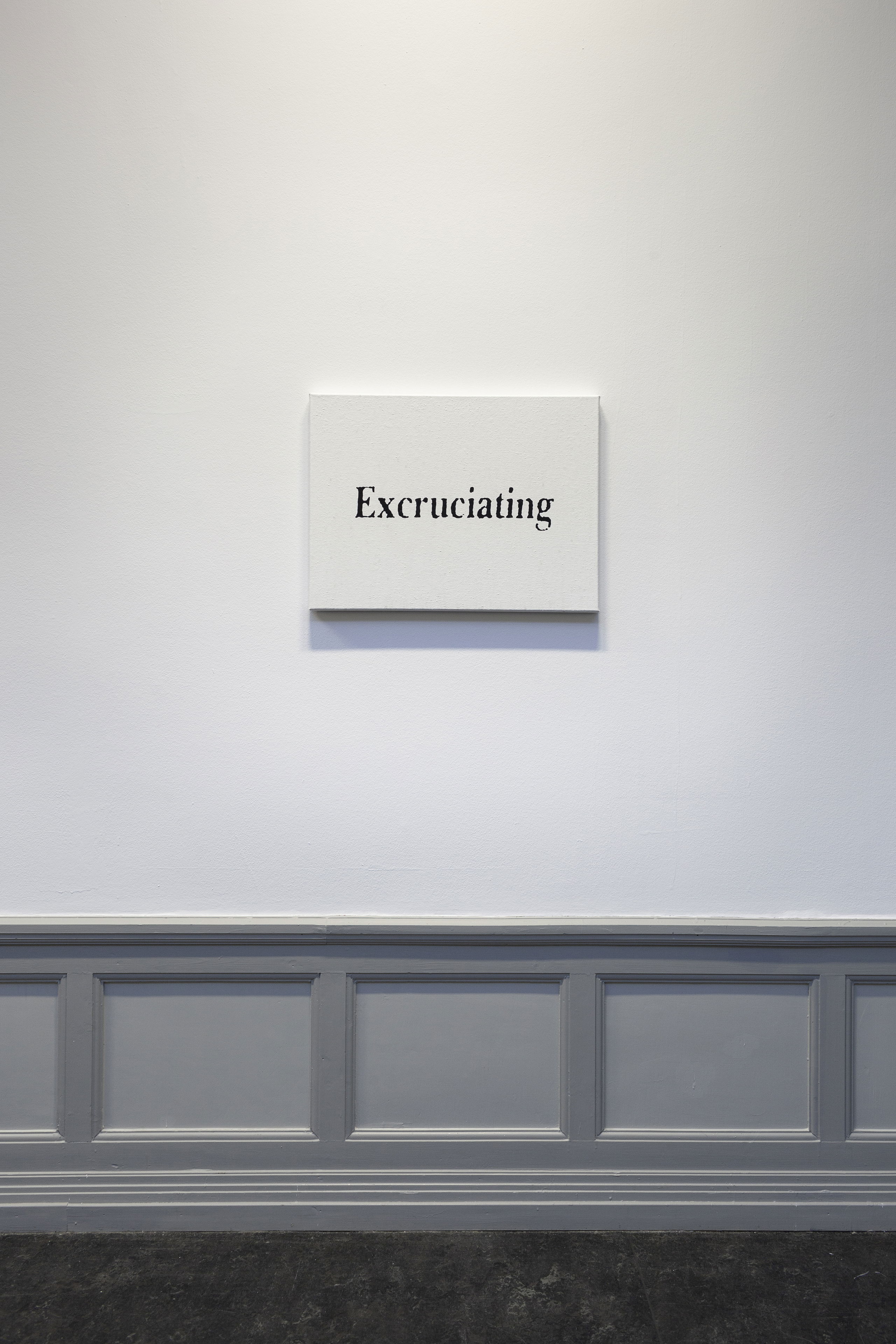
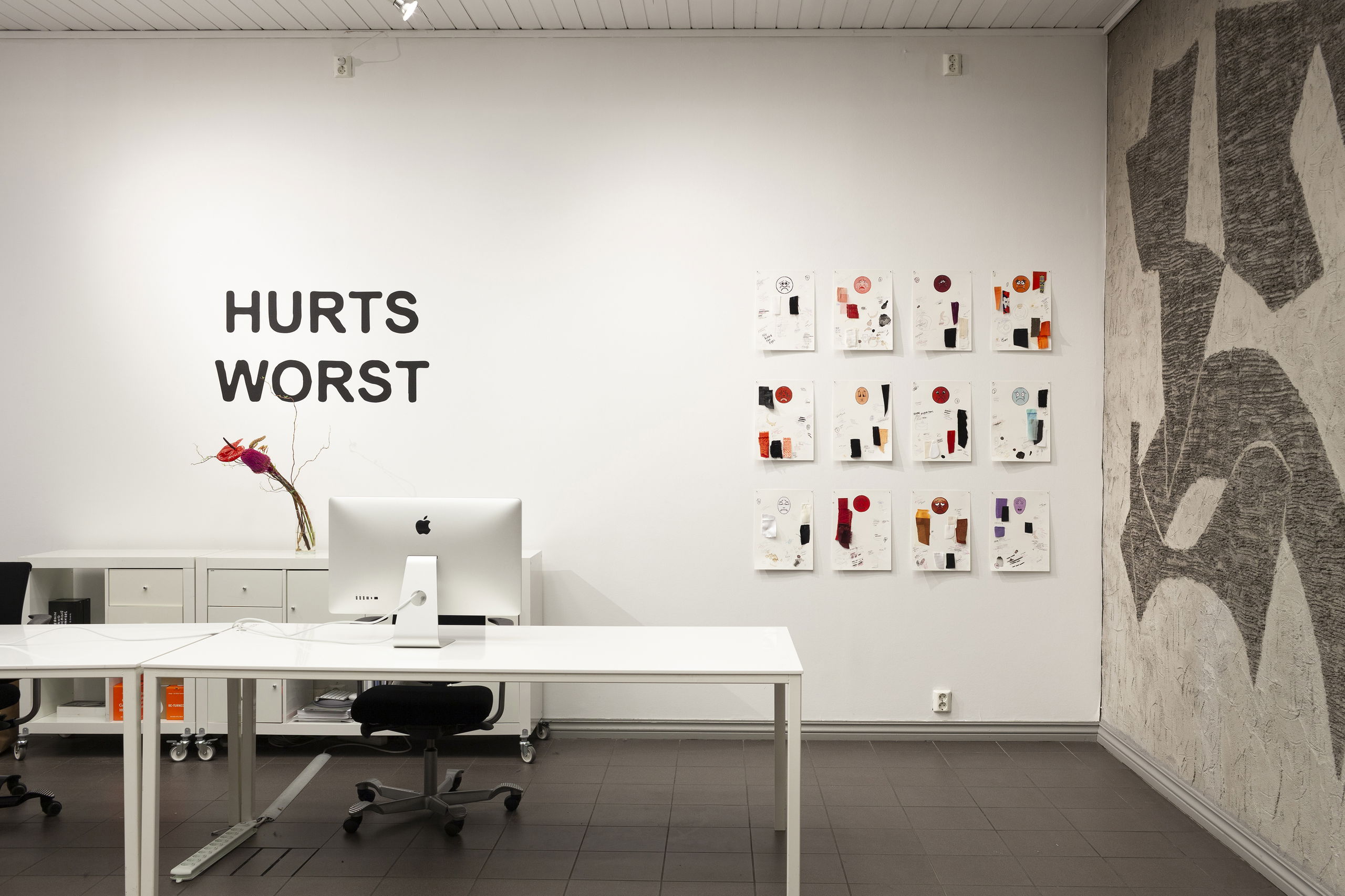
Amanda Ross-Ho, HURTS WORST (2018). Installation view Kunsthall Stavanger, 2019
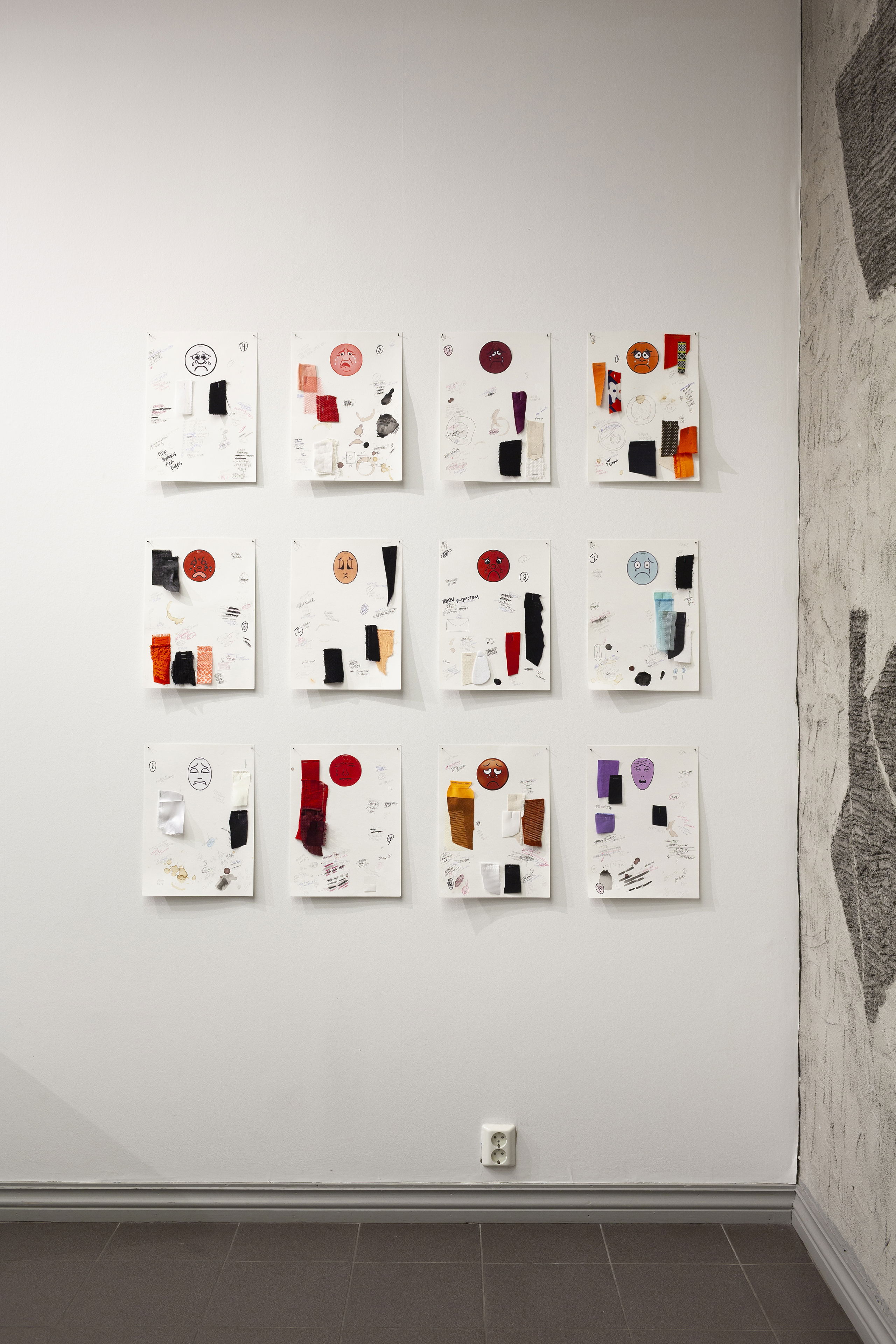
Amanda Ross-Ho, HURTS WORST (2018). Installation view Kunsthall Stavanger, 2019
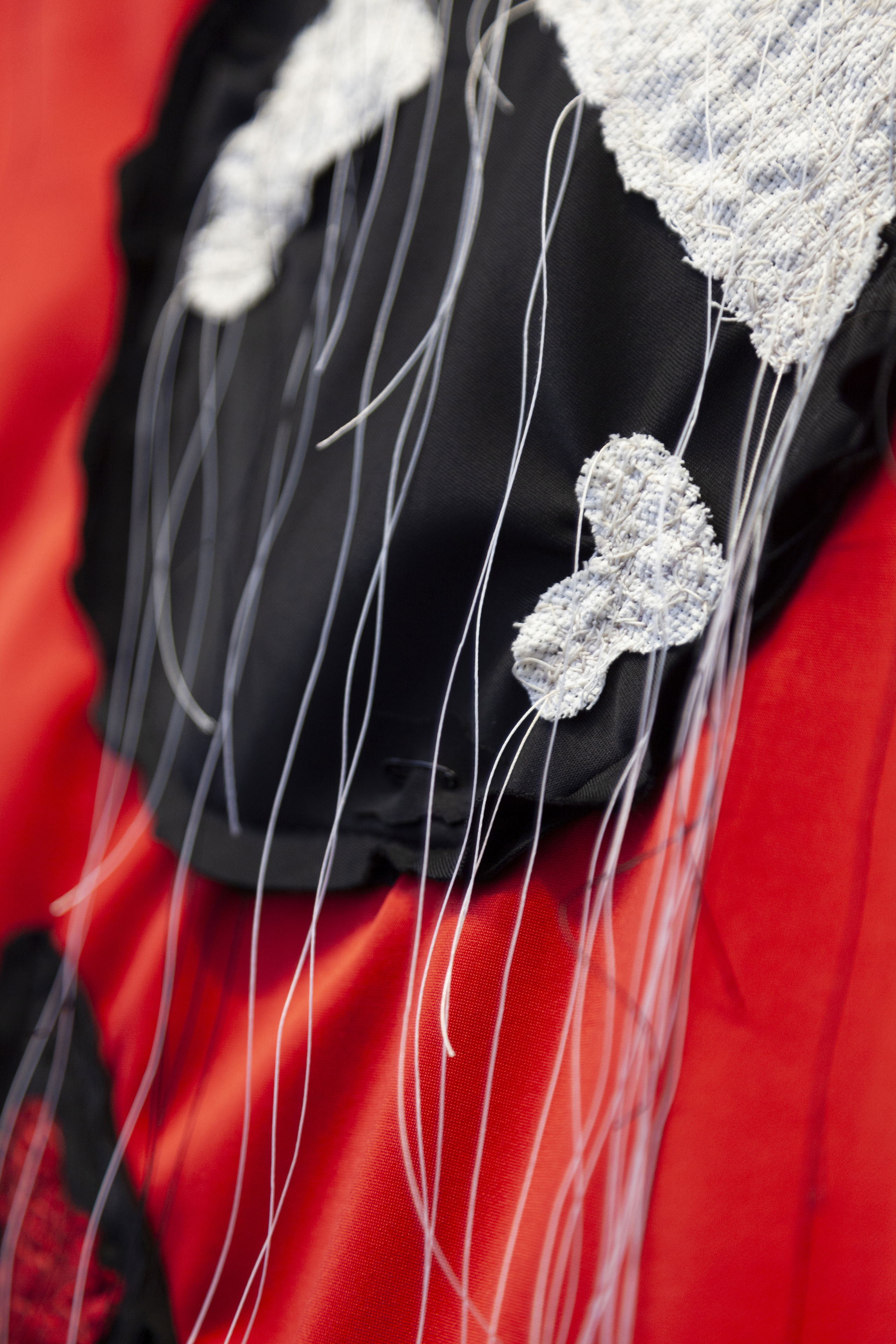
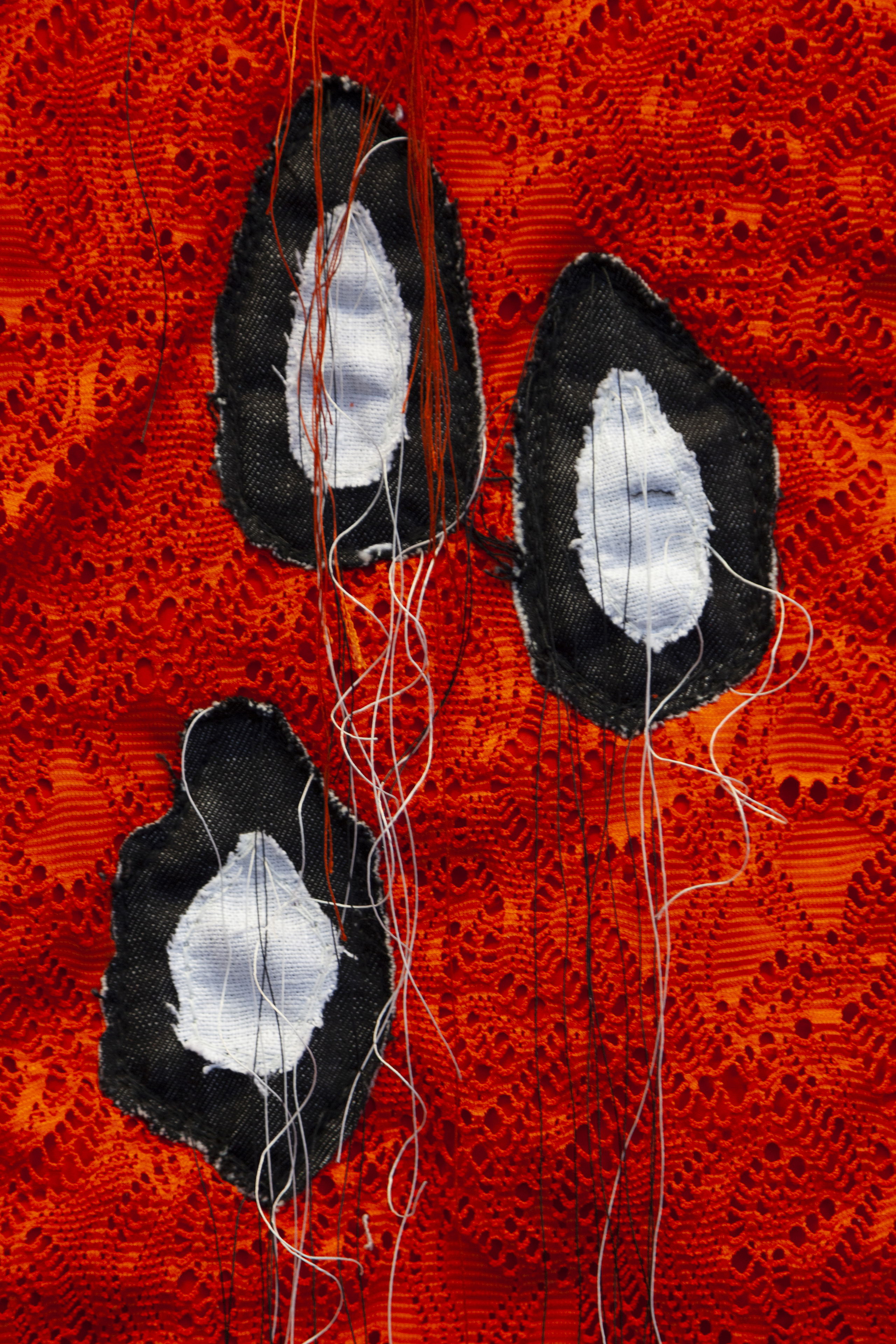
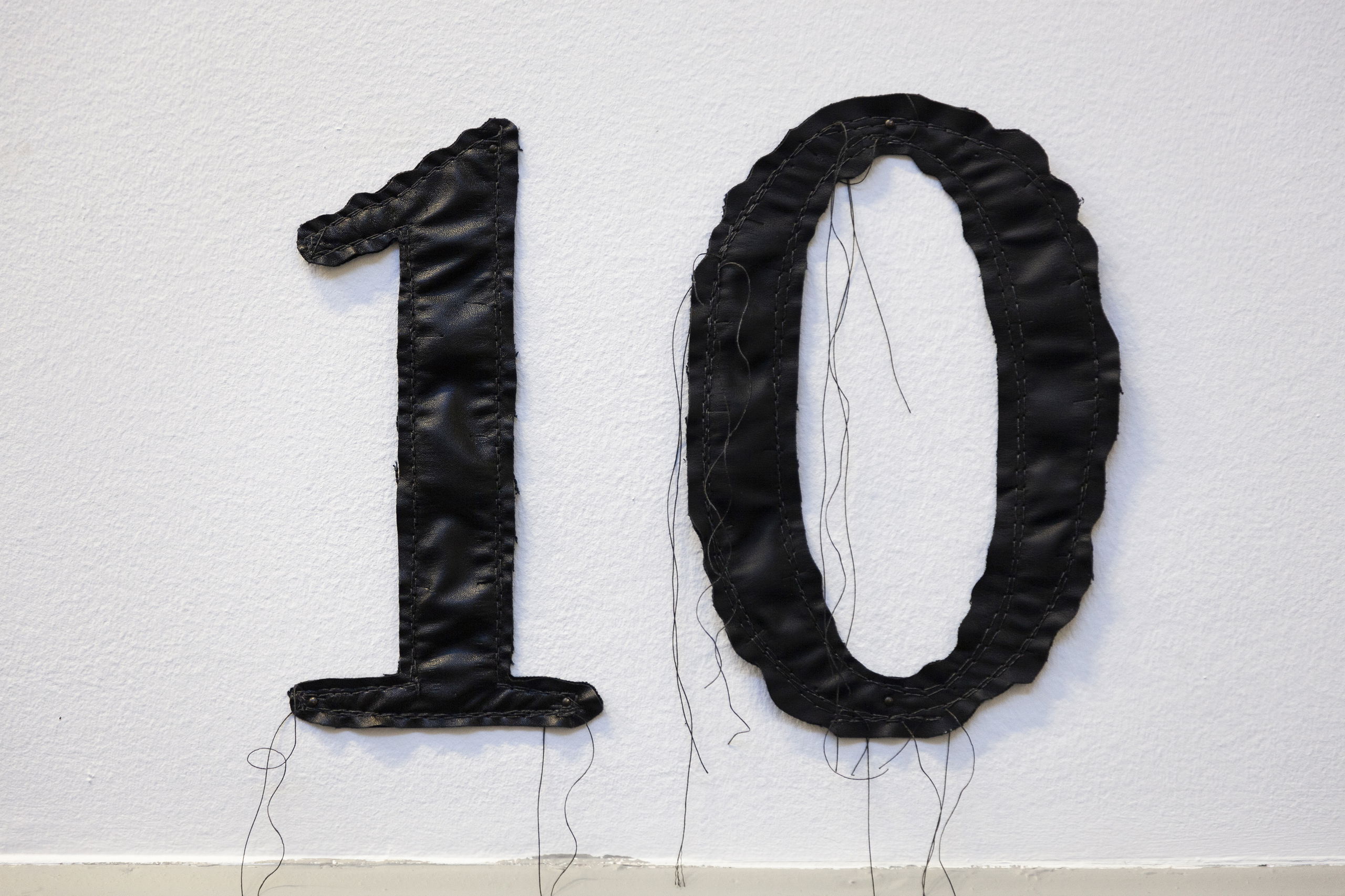
Amanda Ross-Ho, Untitled Metrics (TENS) (2018). Heavy duty canvas, lace, vinyl, perforated vinyl, satin, felt, thread. Dimensions variable, 24 parts
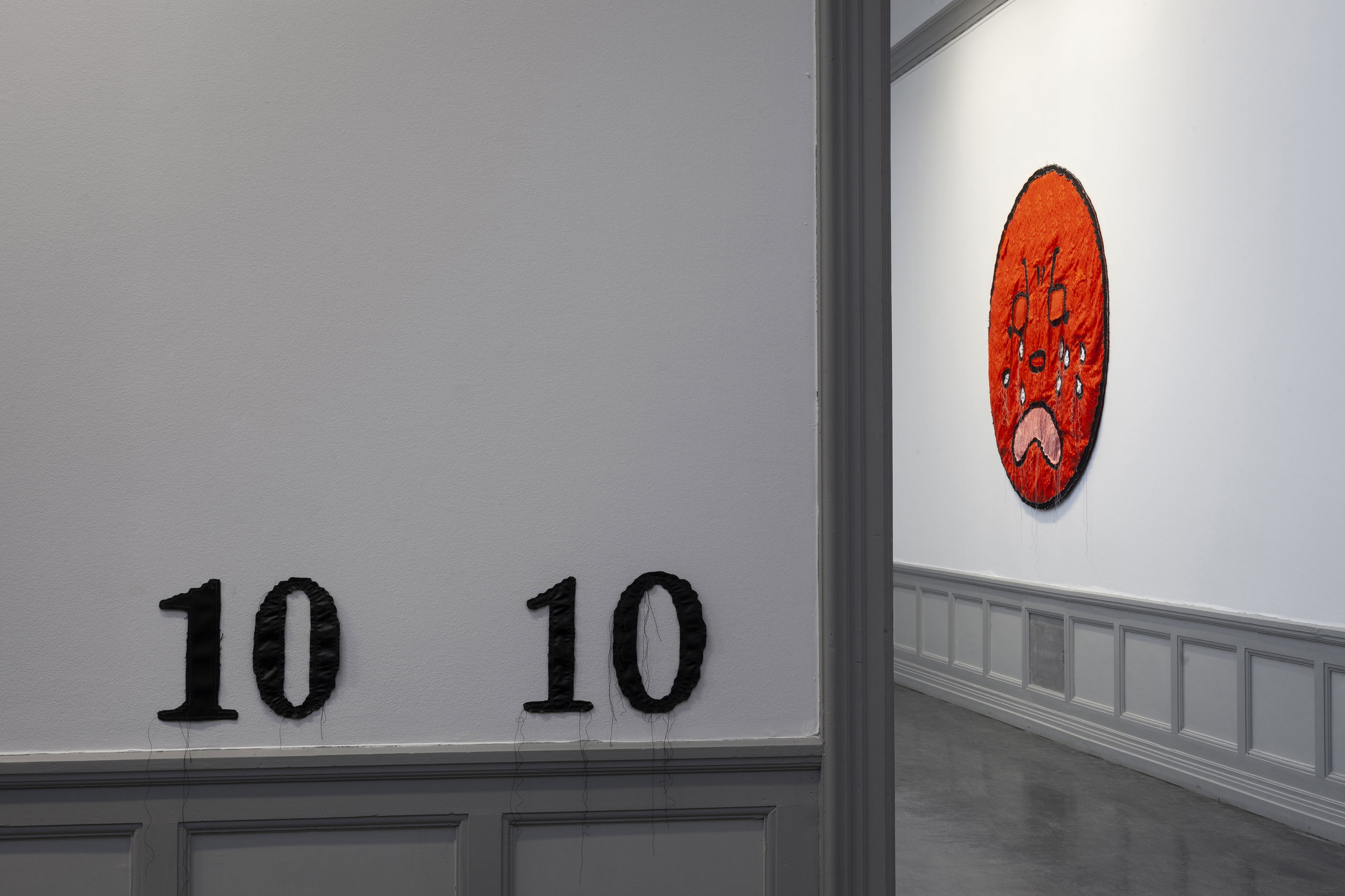
Amanda Ross-Ho, HURTS WORST (2018). Installation view Kunsthall Stavanger, 2019
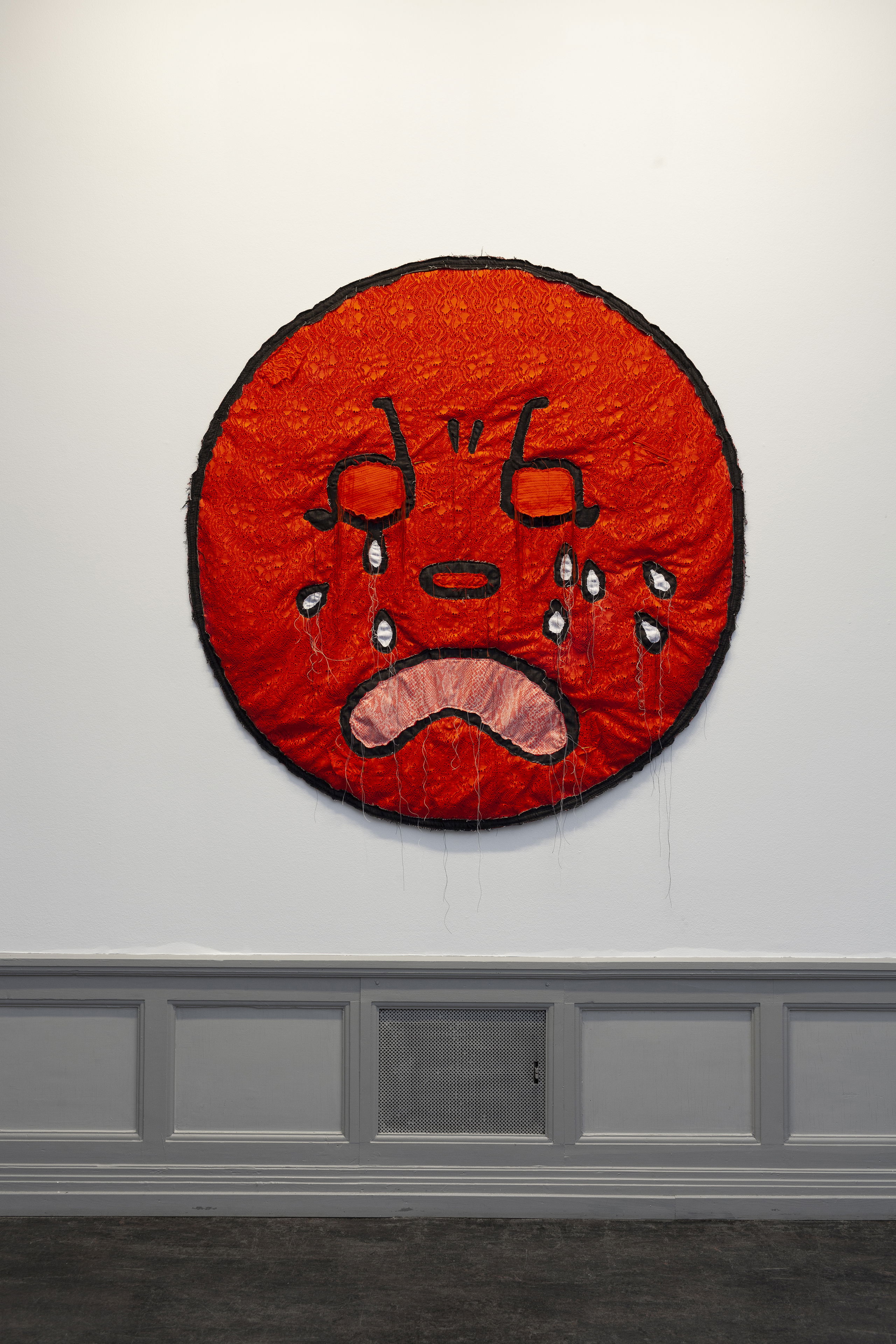
Amanda Ross-Ho, Untitled Crisis Actor (Unimaginable, Unspeakable) (2018). Canvas, polyester charmeuse, stretch lace, snakeskin print cotton, white linen, heavy duty canvas, batting, thread, safety pins, 147 × 144 cm
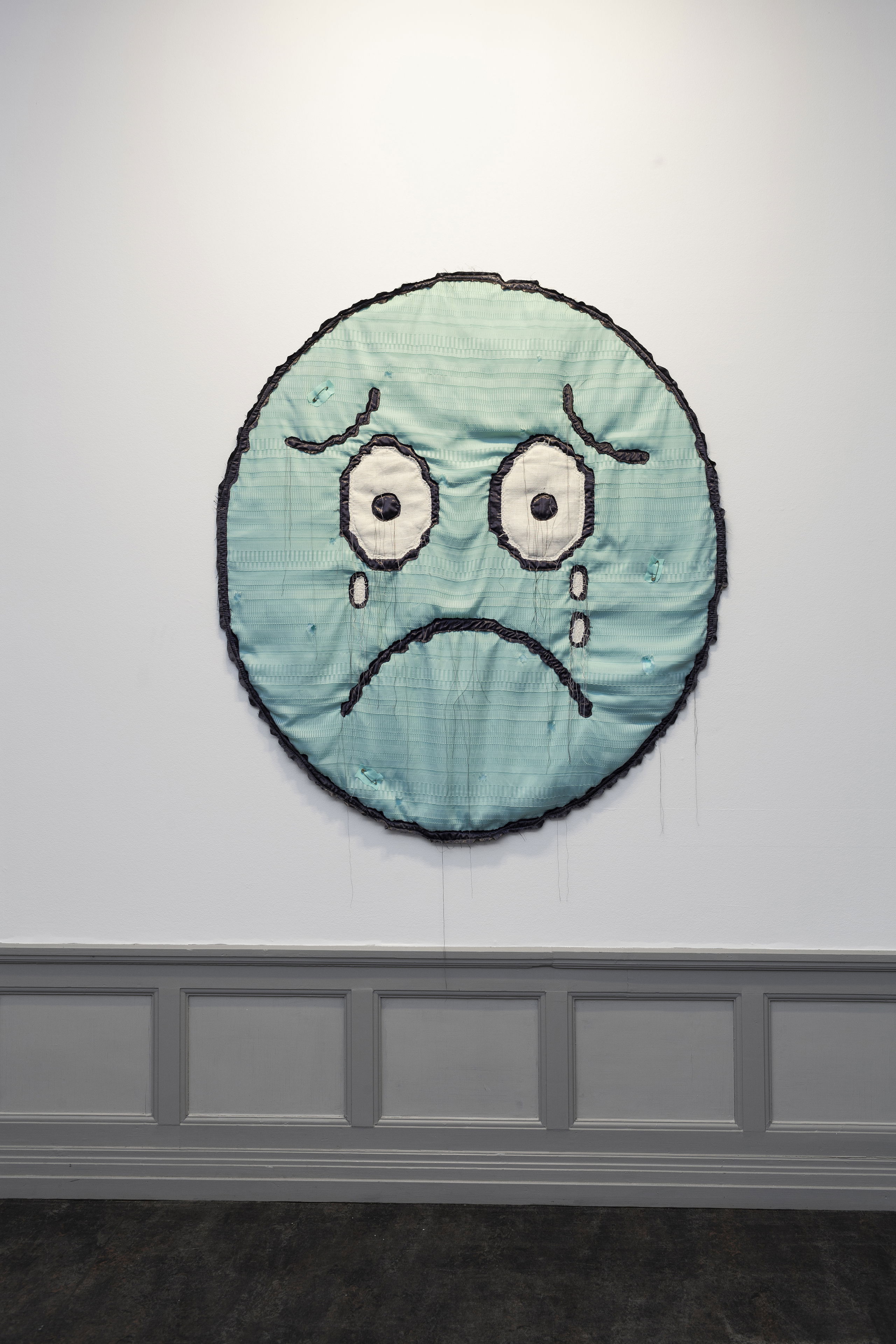
Amanda Ross-Ho, Untitled Crisis Actor (Worst Possible Pain), 2018. Canvas, polyester charmeuse, rip-stop nylon, textured polyester charmeuse, satin, white linen, batting, thread, safety pin, 152 × 134 cm
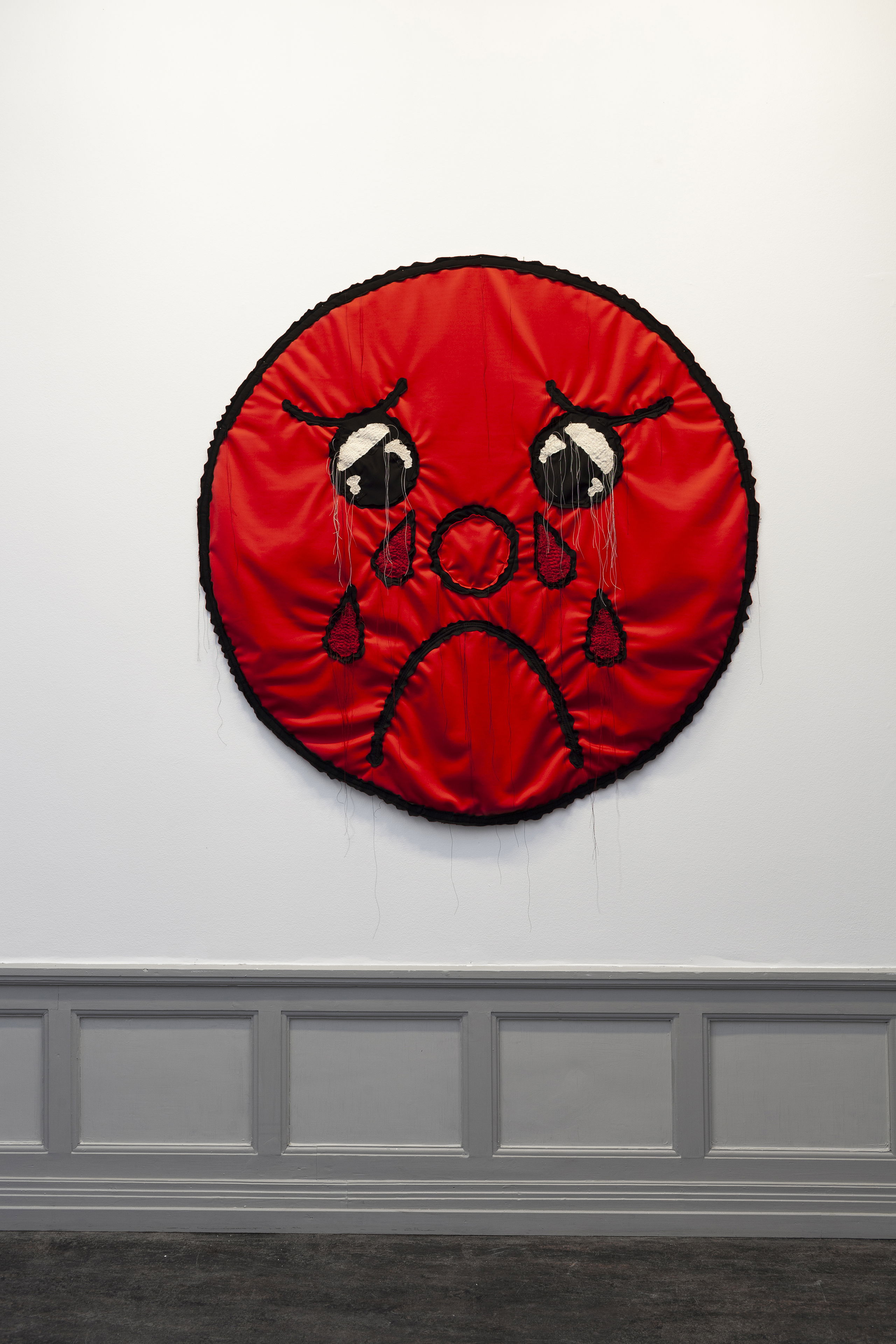
Amanda Ross-Ho, Untitled Crisis Actor (Excruciating unbearable tortuous crushing tearing) (2018). Canvas, lycra polyester Marni II, batting, thread, safety pins, 150 × 144 cm
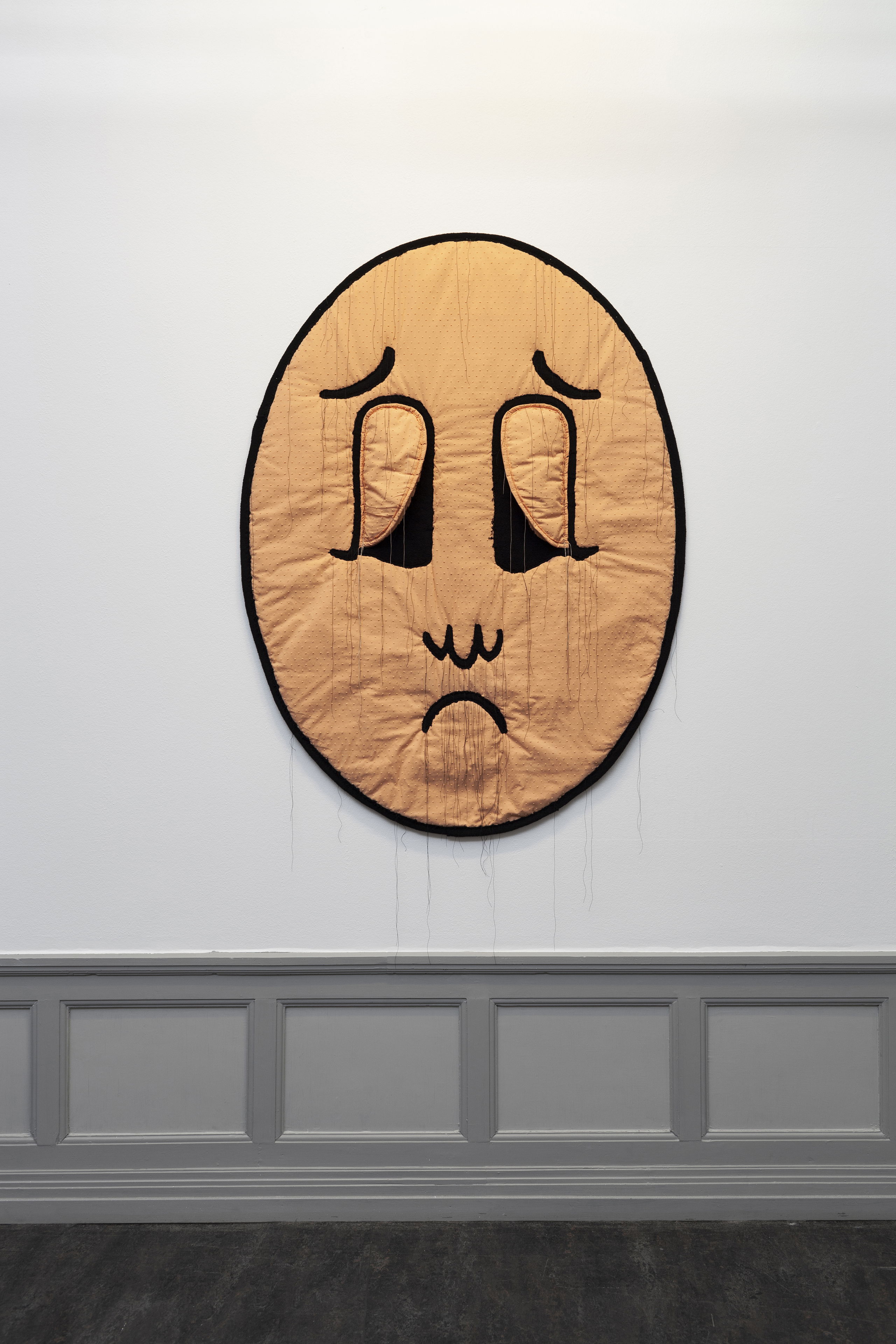
Amanda Ross-Ho, Untitled Crisis Actor (WORST POSSIBLE PAIN) (2018). Canvas, swiss dot, specialty fleece knit, batting, thread, 150 × 111 cm
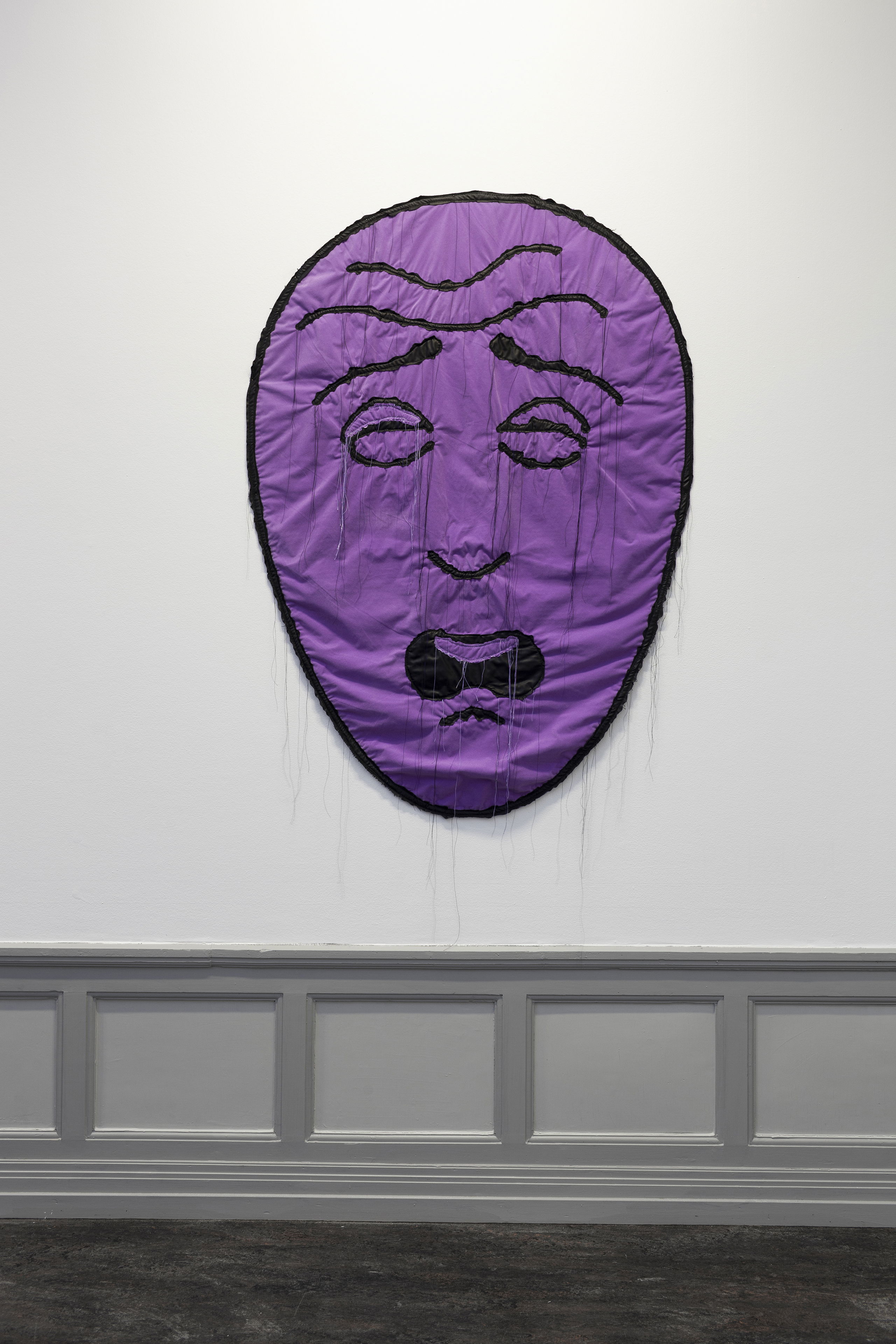
Amanda Ross-Ho, Untitled Crisis Actor (10) (2018). Canvas, décor suede, vinyl, lining, batting, thread, 148 × 107 cm
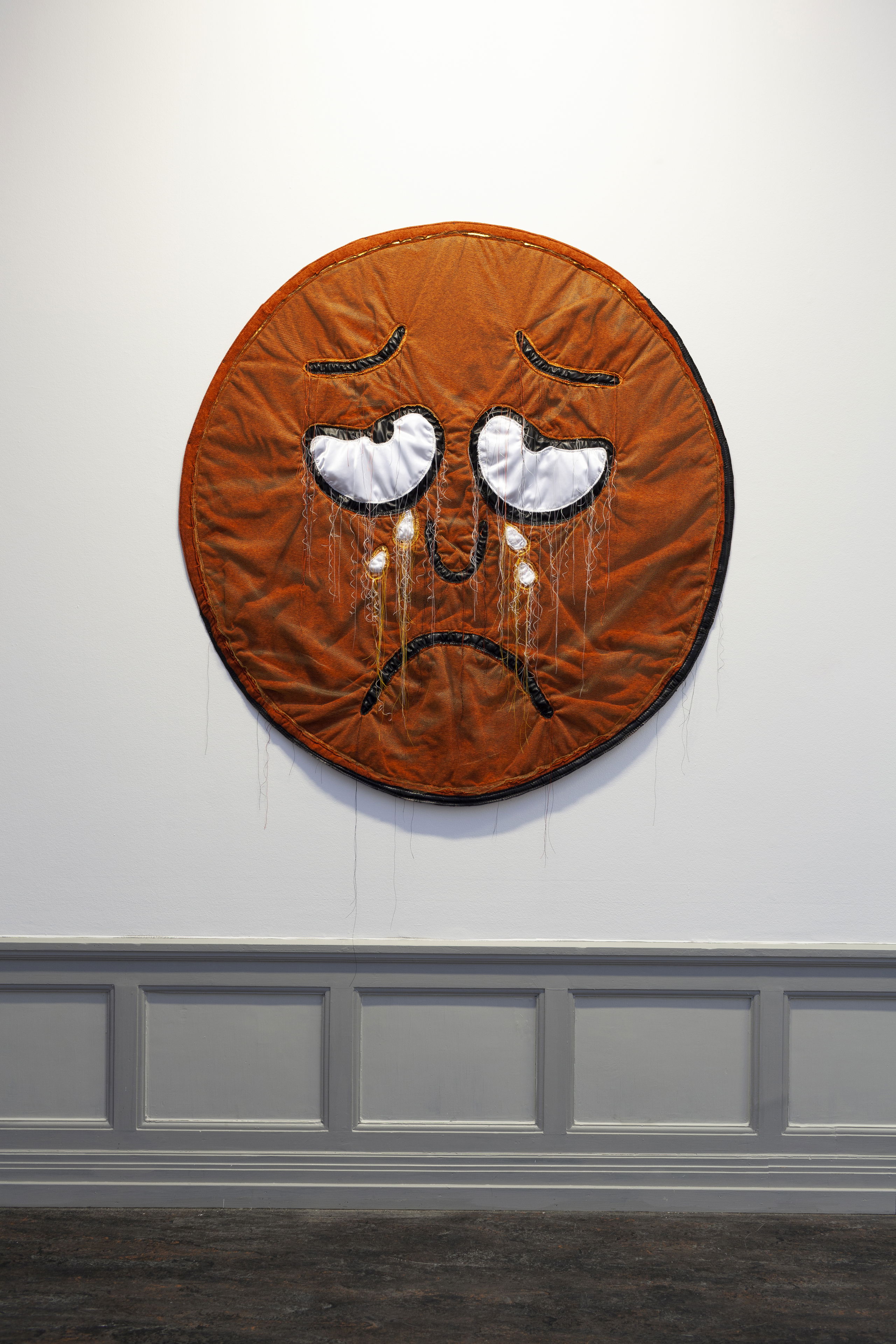
Amanda Ross-Ho, Untitled Crisis Actor (WORST PAIN POSSIBLE) (2018). Canvas, Discount Satin Polyester Tahari, Special Sale Fleece, metallic lycra, patent leather, vinyl, nylon net, batting, thread, 144 × 134 cm
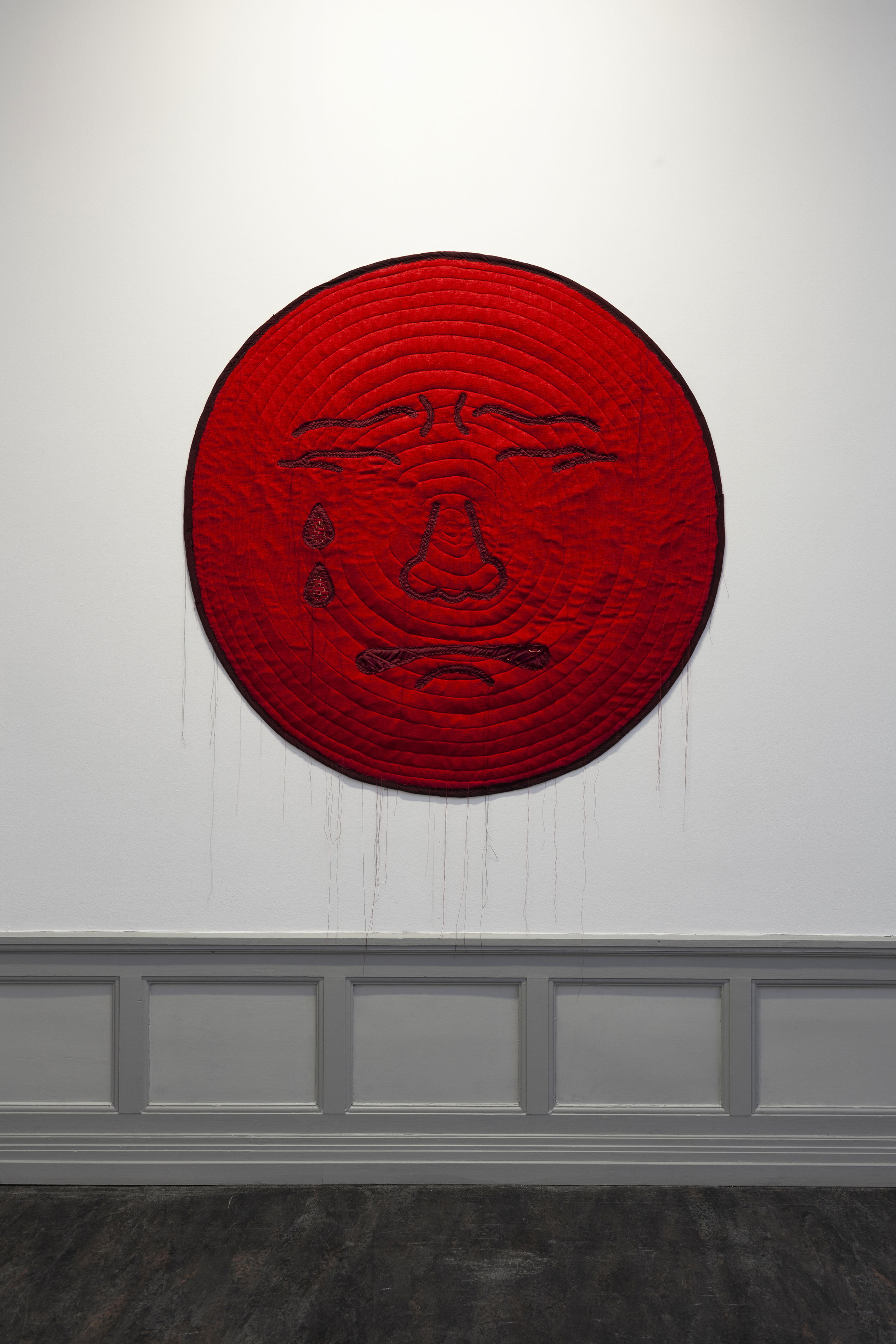
Amanda Ross-Ho, Untitled Crisis Actor (WORST PAIN IMAGINABLE (2018). Canvas, stretch knit, jersey mesh, textured polyester charmeuse, batting, thread, safety pins, 142 x 140cm
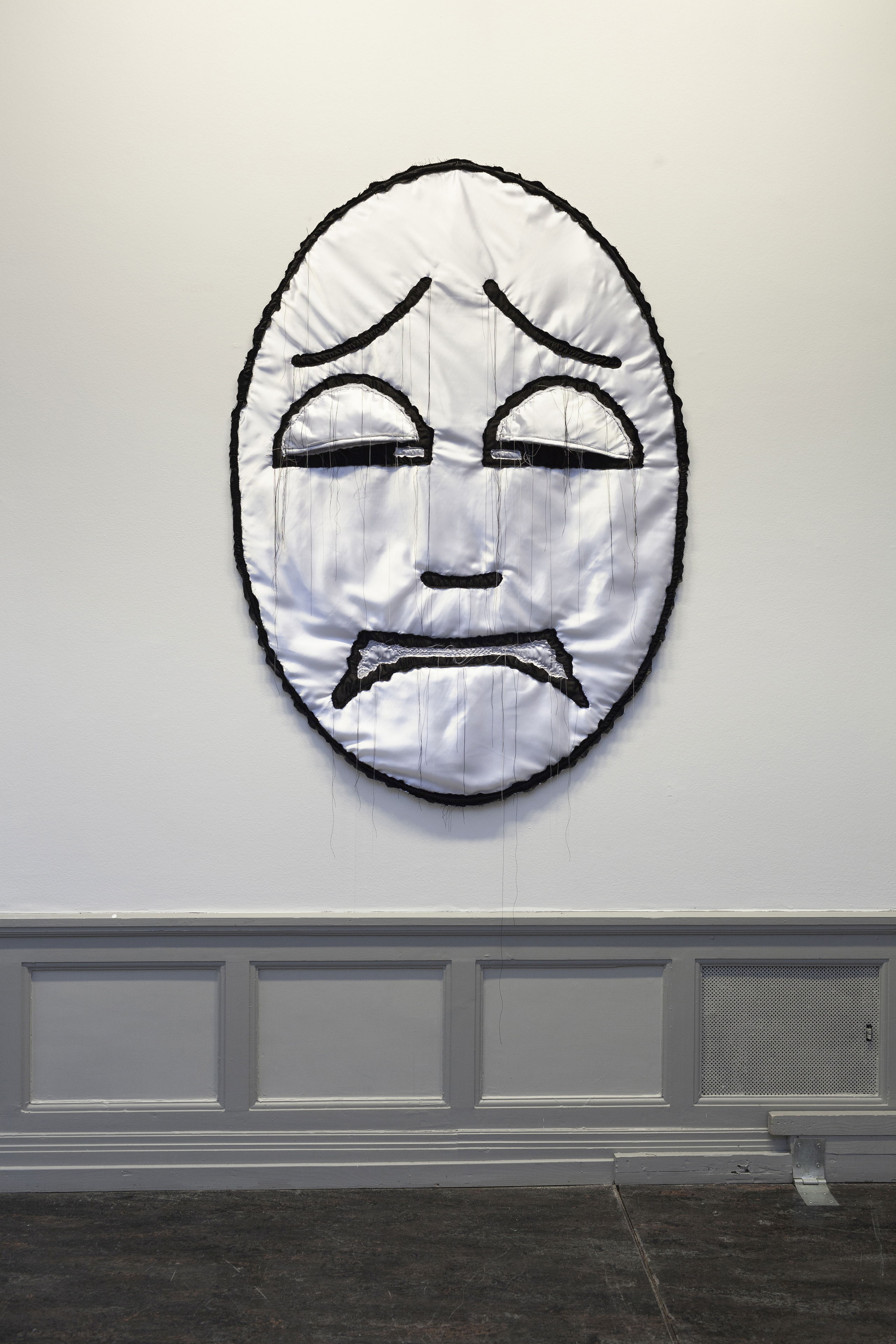
Amanda Ross-Ho, Untitled Crisis Actor (As bad as it could be. nothing else matters) (2018). Canvas, satin polyester Tahari, batting, thread, safety pins, 151 × 107 cm
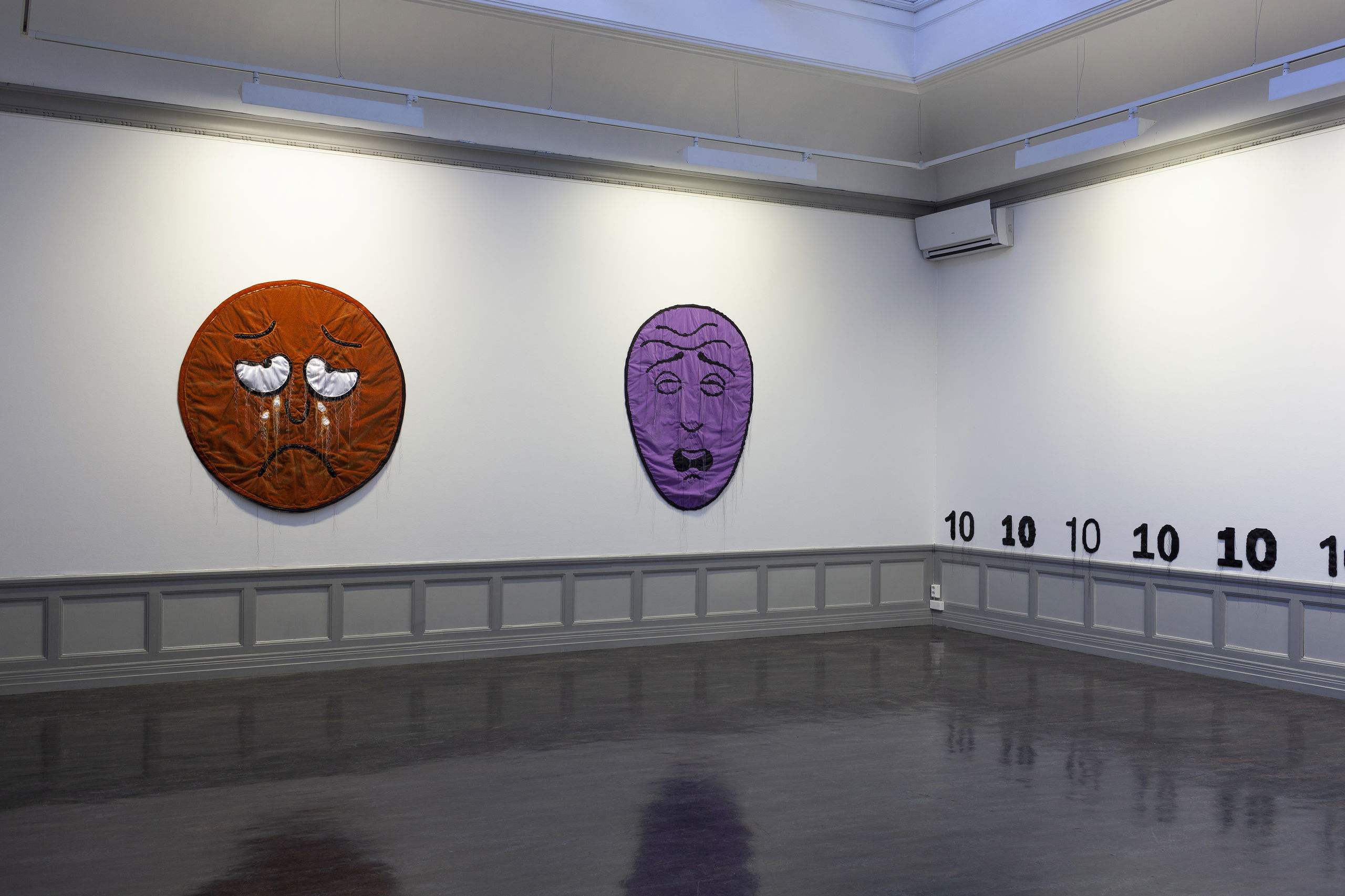
Amanda Ross-Ho, HURTS WORST (2018). Installation view Kunsthall Stavanger, 2019
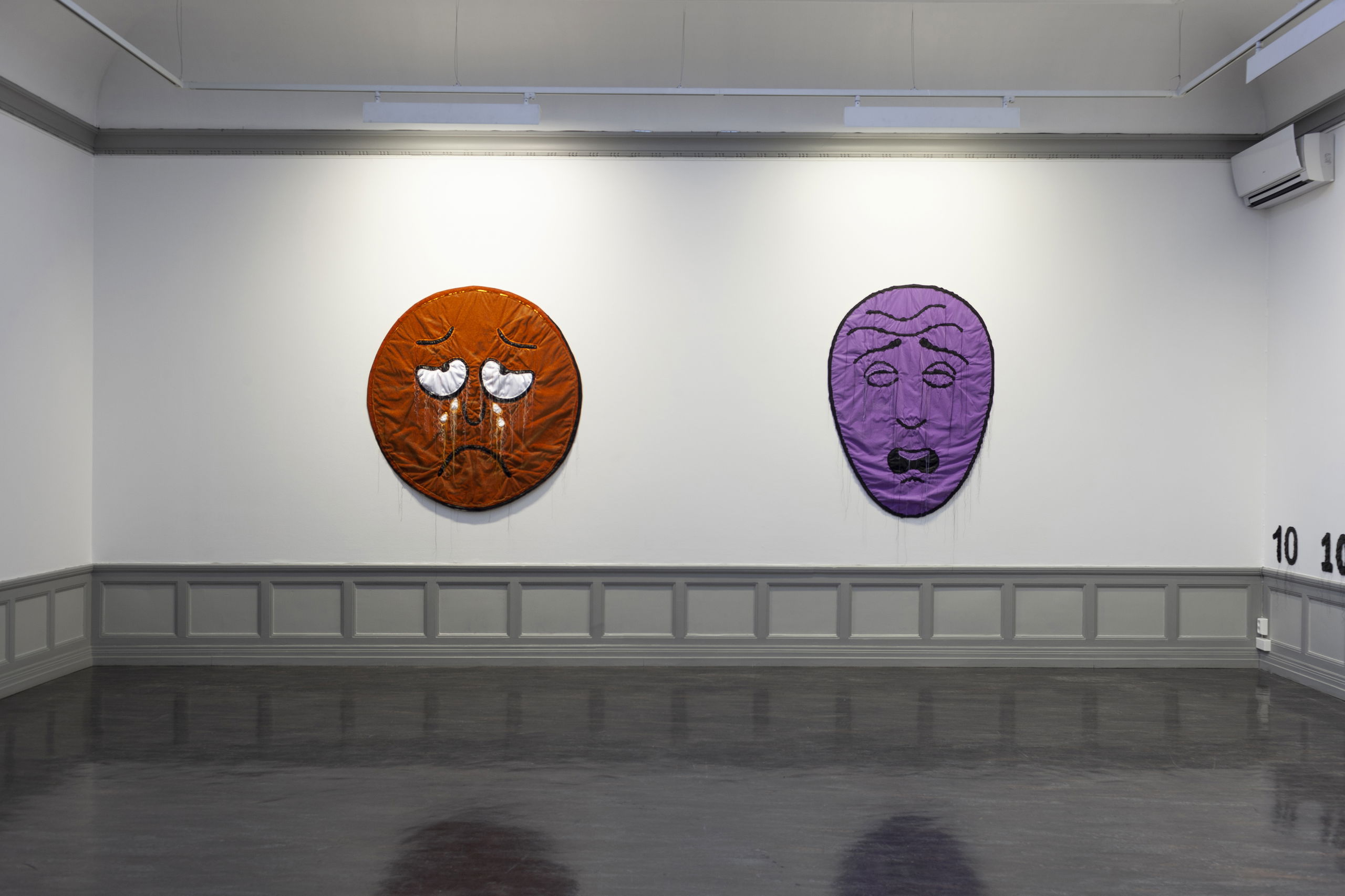
Amanda Ross-Ho, HURTS WORST (2018). Installation view Kunsthall Stavanger, 2019
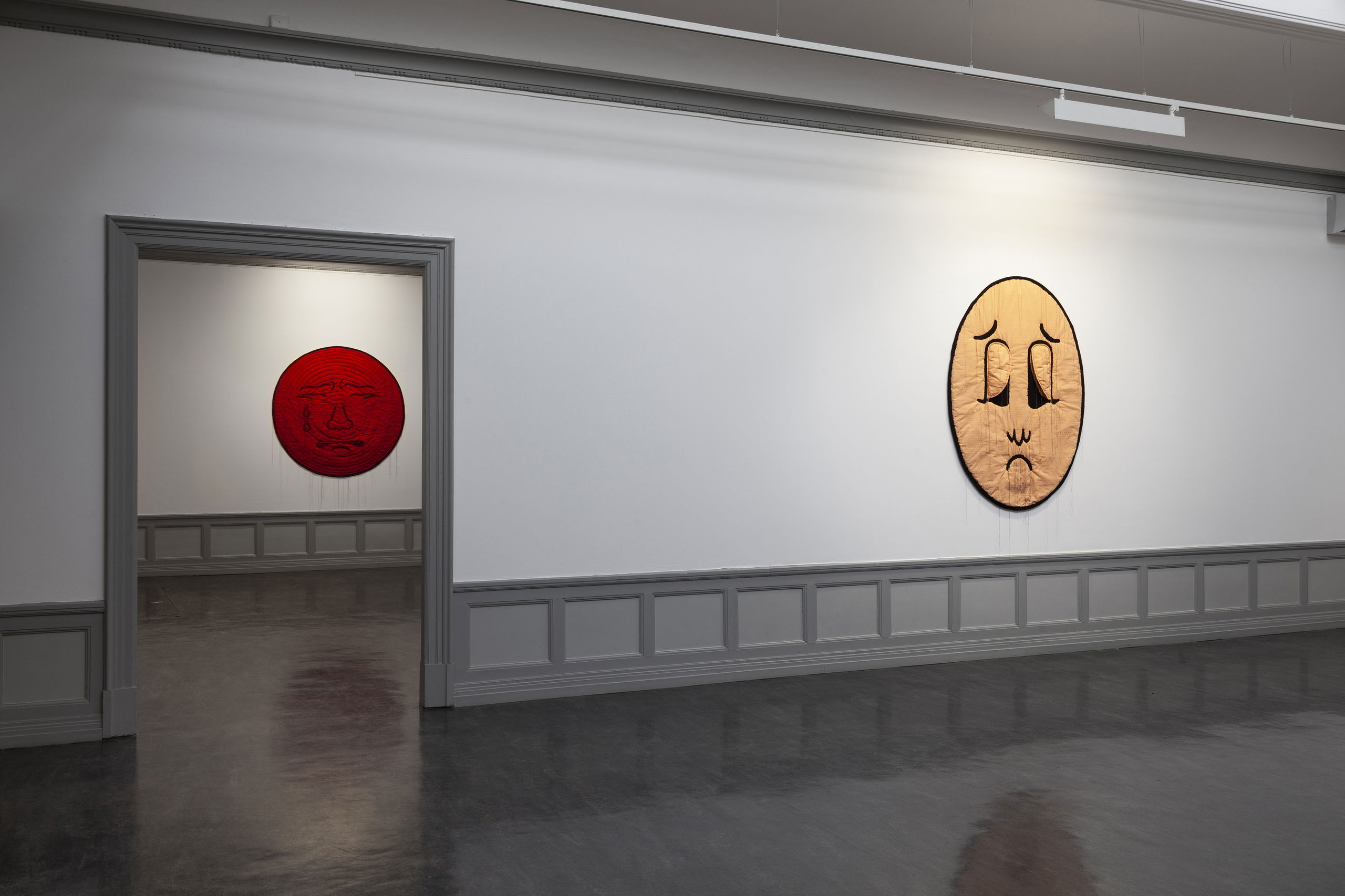
Amanda Ross-Ho, HURTS WORST (2018). Installation view Kunsthall Stavanger, 2019
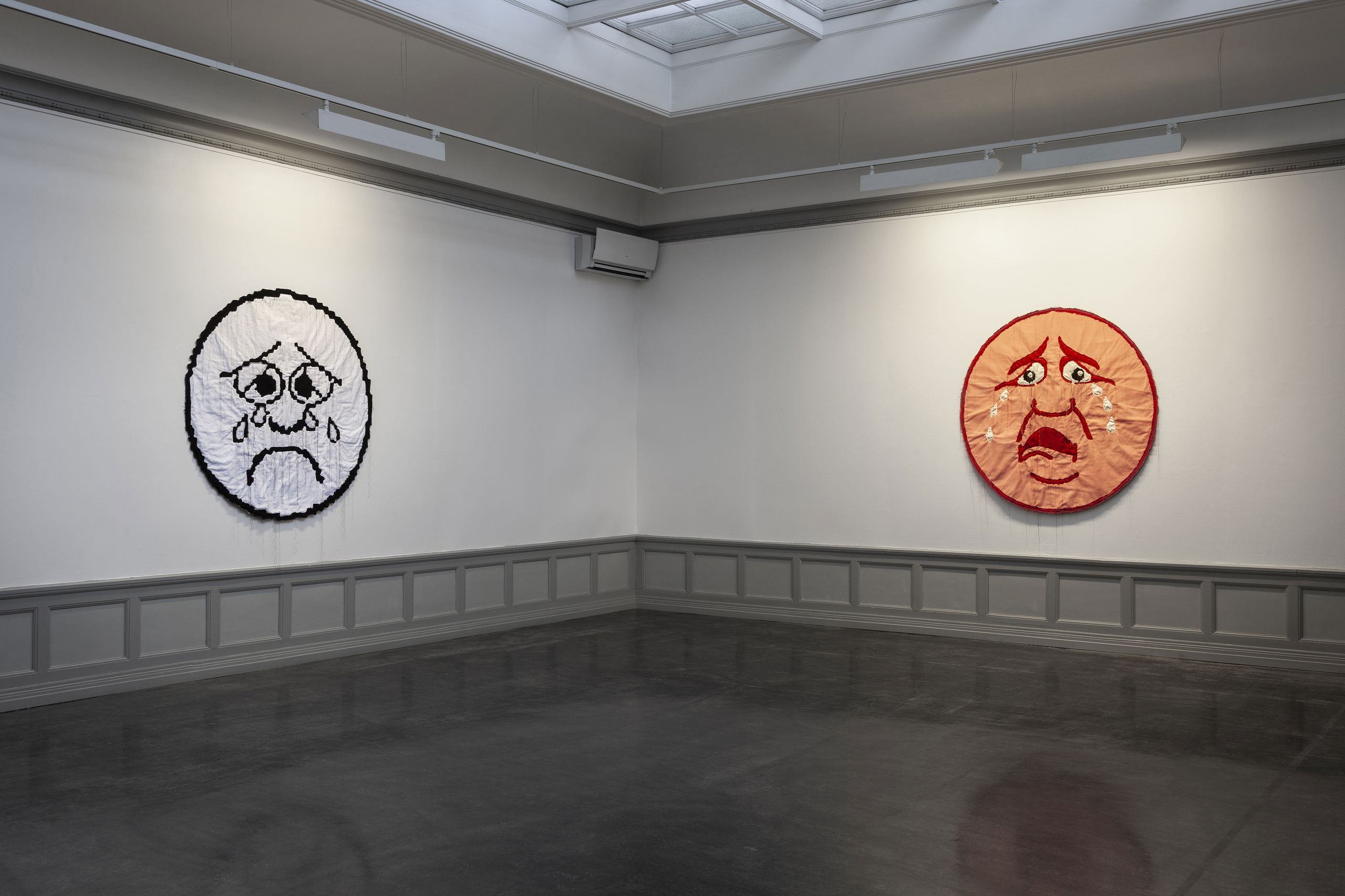
Amanda Ross-Ho, HURTS WORST (2018). Installation view Kunsthall Stavanger, 2019
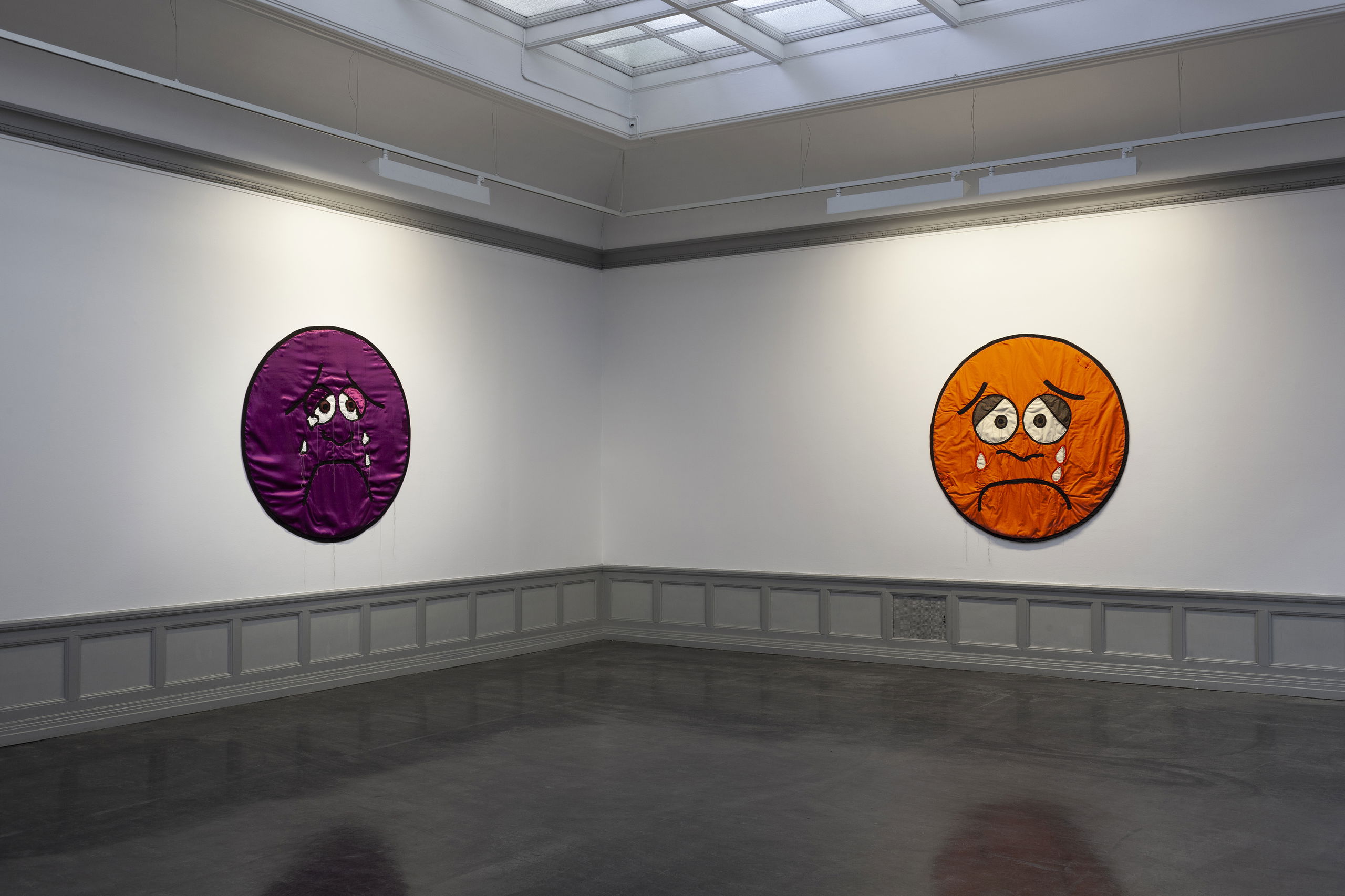
Amanda Ross-Ho, HURTS WORST (2018). Installation view Kunsthall Stavanger, 2019
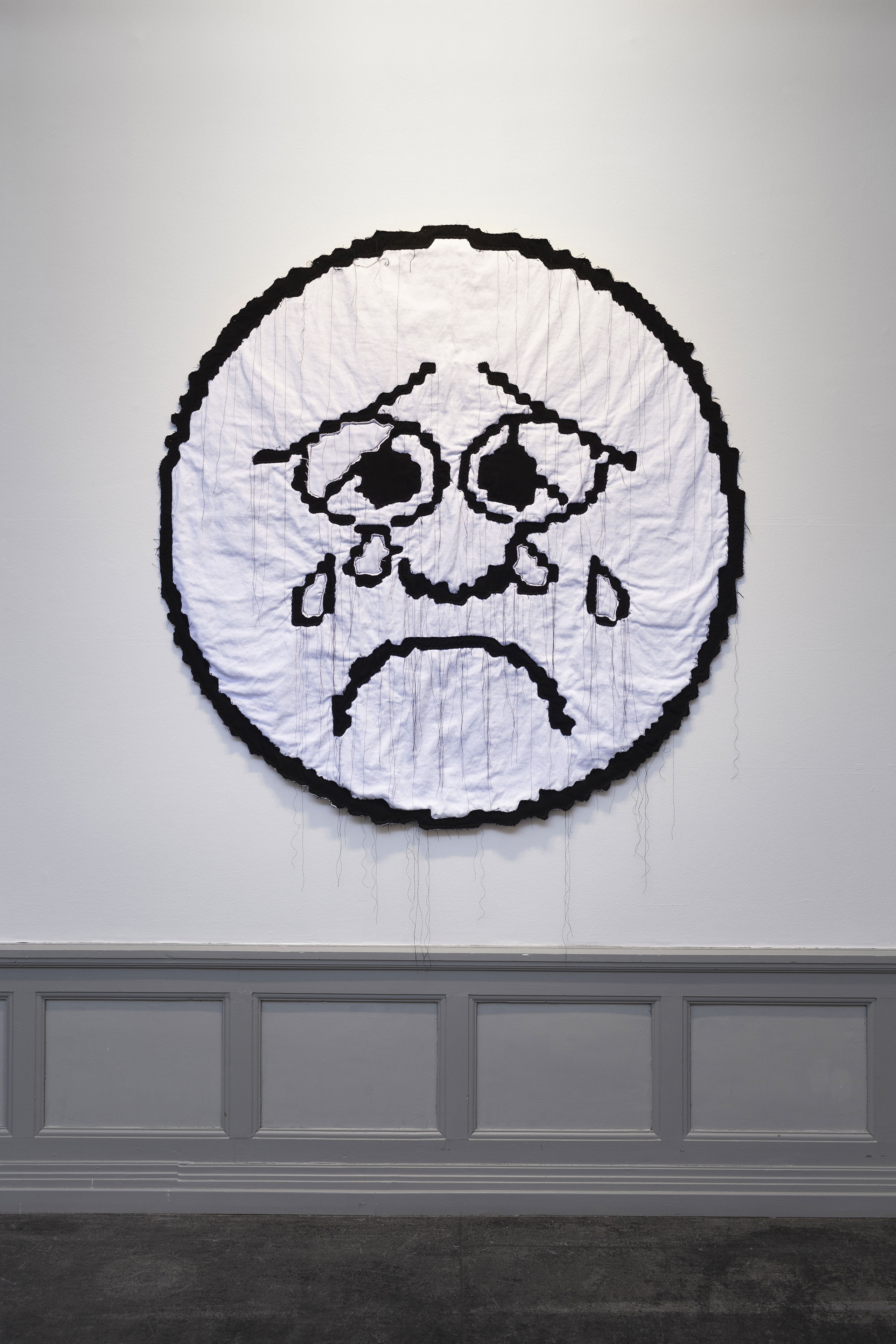
Amanda Ross-Ho, Untitled Crisis Actor (HURTS WORST) (2018). Canvas, bull denim, batting, thread, 150 × 144 cm

Amanda Ross-Ho, Untitled Crisis Actor (HURTS WORST Worst Pain Imaginable) (2018). Canvas, heavy duty canvas, dye sublimation on canvas, polka dot cotton, muslin, batting, thread, safety pins, 148 × 141 cm
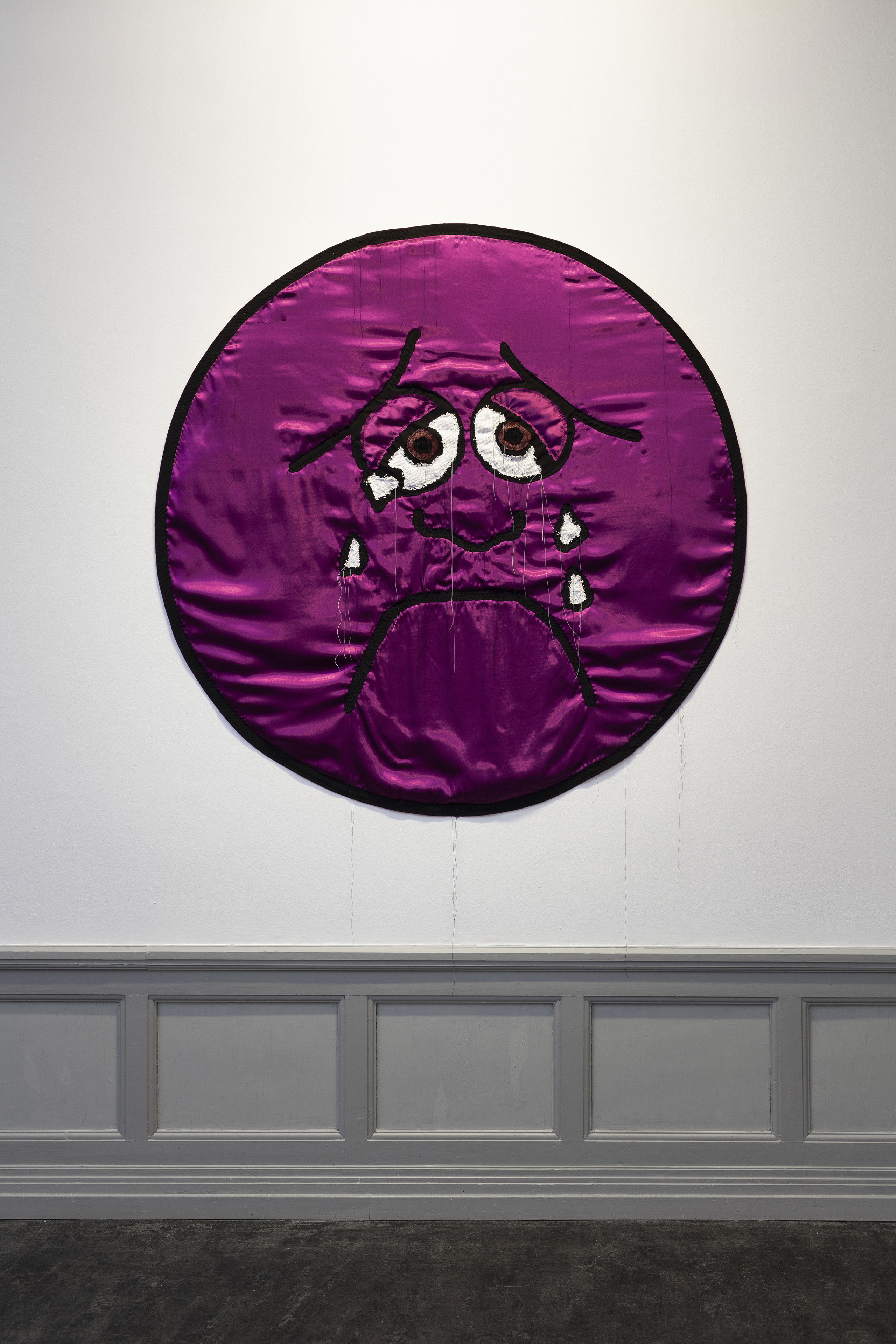
Amanda Ross-Ho, Untitled Crisis Actor (This pain is UNBEARABLE overwhelming We will not want to move. We will be in tears this is our breaking point) (2018). Canvas, satin, basket weave cotton, textured vinyl, specialty knit fleece, batting, thread, safety pins, 148 × 144 cm

Amanda Ross-Ho, Untitled Crisis Actor (Restless unsettled Cries inconsolably) (2018). Canvas, fleece, burlap, polyester Pro-Brite mesh, patent leather, felt, batting, thread, safety pins, 148 × 142 cm

Amanda Ross-Ho, HURTS WORST (2018). Installation view Kunsthall Stavanger, 2019
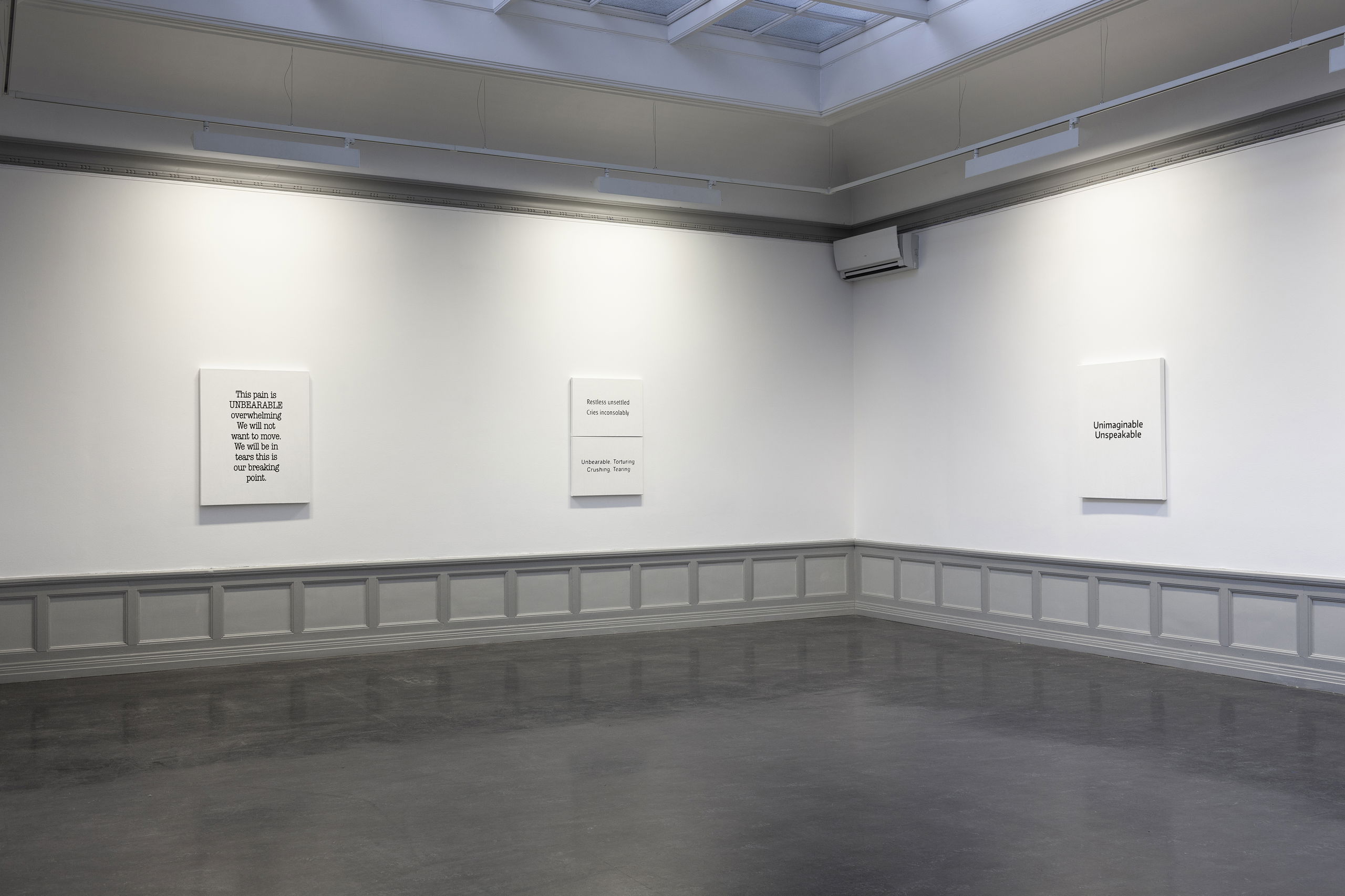
Amanda Ross-Ho, HURTS WORST (2018). Installation view Kunsthall Stavanger, 2019
